You ruined my favorite album
A listener’s diary by Luca Vertemati, #cosechepiaccionoabruscolino ★★★★★
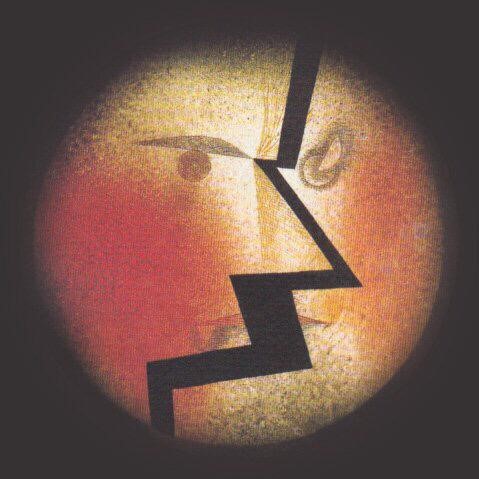
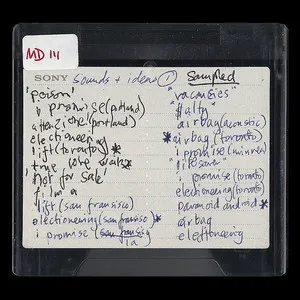
RADIOHEAD − MINIDISCS HACKED (2019)
[EN] Someone has stolen Radiohead 18 minidiscs containing unpublished recordings dating back to the period of OK Computer.
Instead of paying the conspicuous blackmail required, what do they do?
They put them online, no profit: 16 and a half hours of Radiohead, unfiltered.
The compositional process of a band of this caliber (and on the occasion of one of their masterpieces) has rarely come to light.
Here, however, here is a flow of acoustic sketches, synthetic carpets, field recordings, embryos, carcasses, sources, targets, shortly traveled paths, directions not taken, hypotheses, syntheses, gigantisms, decontextualizations, stratifications, variations, distortions, brightnesses.
Wonderful.
I don’t think even the Radioheads themselves have ever listened to all this material in its entirety but the beauty is that in some way these fragments, whether narrative or chronicle, sound incredibly like an effective artistic project, experimental music in the sense of a knowledge procedure, so maybe even self-contained.
I can only imagine the splendor of the recordings about Kid A and Amnesiac… c’mon, hackers! (June 12, 2019) (Luca’s ★★★★)
[IT] Qualcuno ha rubato ai Radiohead 18 minidisc contenenti registrazioni inedite risalenti al periodo di OK Computer.
Invece di pagare il cospicuo ricatto richiesto loro, cosa fanno?
Le mettono online, no profit: 16 ore e mezza di Radiohead, senza filtro.
Raramente il processo compositivo di una band di tale levatura (e in occasione di uno dei loro capolavori) è venuto alla luce.
Qui invece ecco un flusso di abbozzi acustici, tappeti sintetici, field recordings, embrioni, carcasse, princìpi, mete, sentieri appena battuti, direzioni non prese, ipotesi, sintesi, gigantismi, decontestualizzazioni, stratificazioni, variazioni, distorsioni, lucentezze.
Una meraviglia.
Credo che nemmeno i Radiohead stessi abbiano mai riascoltato tutto questo materiale per intero ma il bello è che in qualche maniera questi frammenti, narrativi o cronachistici che siano, suonano incredibilmente come un progetto artistico effettivo, musica sperimentale nel senso di procedura di conoscenza, dunque forse persino autoconclusivo.
Posso solo immaginare lo splendore delle registrazioni inerenti Kid A e Amnesiac… forza, hackers! (12 Giugno 2019) (Luca’s ★★★★)

LOW − DOUBLE NEGATIVE (2018)
Un flusso onirico Lynchiano, continuamente in bilico tra tangibile inquietudine e illusione di luce, un affascinante viaggio nel rumore cosmico e nella melodia cristallina, un ripugnante vortice di distorsioni dietro (no, DENTRO) il quale il sangue continua a scorrere e un cuore a battere, flebile o precipitato, comunque incessante: è il suono che fa un uomo (o ciò che ne resta) alle prese con brandelli di realtà che sfugge, muta, affoga ed è corrotta dal morbo ma, per quanto aliena e frammentata essa sia, resta esperienza da codificare in qualche modo e alla quale aggrapparsi con tutta la forza possibile.
Sembra impenetrabile e io l’avevo (ampiamente) sottovalutato, ma da quando mi è entrato non riesce più a lasciarmi, commovente ad ogni ascolto.
Con Double Negative i Low si rigenerano ancora una volta, fanno proprie le lezioni di Arca, di Bon Iver, di tutta la drone music post-industriale, entrano a capofitto nel contemporaneo, lo sondano con lentezza e profondità, lo filtrano di Celestiale come solo loro sanno fare e lo rigettano regalandoci un album sublime, il più intenso, poetico e a suo modo VERO del 2018, se non del decennio.
Scusate, ma è un capolavoro. (15 Dicembre 2018) (Luca’s ★★★★1/2)
LIFT TO EXPERIENCE – THE TEXAS-JERUSALEM CROSSROADS (2001)
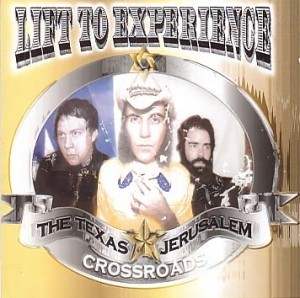
THE TEXAS-JERUSALEM CROSSROADS
Sulla possibilità di sorprendersi, ancora.
Quando il tuo amico e compagno di concerti Giovanni, fine intenditore, ti parla estasiato di questo capolavoro dei Lift to Experience datato 2001, tu ti senti a disagio perché come cazzo è possibile che ti sia sfuggito? prometti dunque di approfondire e scopri ancora una volta (e con gioia) che, fortunatamente, in fondo non sai un cazzo.
The Texas-Jerusalem Crossroads è un disco non facile, dilatato e spaziale, scarno ed esplosivo, recitato più che cantato, come se fosse una continua confessione devozionale che si serve di codici musicali diversi (il post-rock, lo shoegaze, lo spiritual, la tradizione americana) per sottolineare quelle che sembrano accorate implorazioni e intime preghiere, profonde ma vacillanti: le mie parole sono urgenti, verranno ascoltate? Ho fede.
La ristampa appena uscita in doppio vinile blu e rosso riempie un vuoto altrimenti incolmabile (la stampa del 2001 ha già raggiunto cifre astronomiche) ed è impreziosita da un nuovo missaggio (più consono alle intenzioni originali di Josh T. Pearson e co. disattese a suo tempo dai produttori) e dalla grafica che rinfresca appena l’orribile copertina originale, degna di un brutto CD di gangsta rap. (28 Febbraio 2017) (Luca’s ★★★★)
WALLIS BIRD – YEAH! SEVEN YEARS OF WALLIS BIRD LIVE (2015)
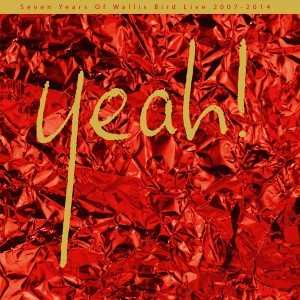
YEAH! SEVEN YEARS OF WALLIS BIRD LIVE (2015)
A prescindere dai vostri gusti musicali, qualora capitasse nelle vostre vicinanze non mancate di assistere a un concerto di Wallis, soprattutto se la venue è un piccolo club, di quelli in cui il contatto con l’artista è davvero possibile, perchè poche performer sono così genuine e si danno così totalmente al pubblico: portateci chi amate, è una piccola magia da condividere.
Questo, che resta un ottimo disco (soprattutto il secondo LP, un po’ più intimo), rende solo pallidamente l’atmosfera di una serata in sua compagnia. (19 Febbraio 2017) (Luca’s ★★★)
MANIC STREET PREACHERS – THE HOLY BIBLE (1994)
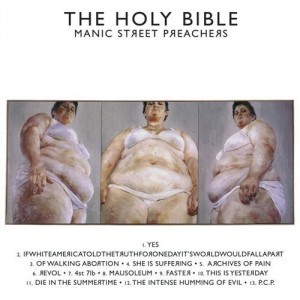
THE HOLY BIBLE (1994)
Il miglior disco dei Manic Street Preachers.
Tredici tracce che, ispirate incessanti incalzanti intransigenti, attaccano da sinistra la società, musicalmente un’esplosiva miscelona di glam, punk, hard rock e brit pop.
Siccome sono un pirla all’epoca (cazzo, ventitré anni fa!) l’avevo snobbato, ora per puro caso ho il CD in loop da una settimana sull’autoradio.
E sono innamorato.
The Holy Bible è dunque per me la colonna sonora di un amore: vince facile.
Quindi ieri mi sono portato a casa l’LP che c’era in negozio.
Loro stessi griderebbero al consumismo, ma in questo caso si tratta di consumismo sentimentale, e mi hanno già perdonato. (16 Febbraio 2017) (Luca’s ★★★1/2)
THE RED CRAYOLA – THE PARABLE OF ARABLE LAND (1967)
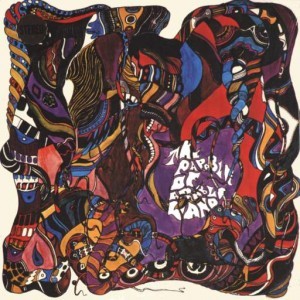
THE PARABLE OF ARABLE LAND (1967)
Poi dicono che i vinili rimasterizzati non suonano…
Balle.
Non hanno ascoltato per esempio la riedizione in doppio vinile (stereo e mono) di The Parable of Arable Land, misconosciuto capolavoro dei Red Crayola datato 1967 che traccia il solco della psychedelia più caotica, libera e naïf in cui ha poi abitato tanto rock pseudo-avanguardista (e in cui tutt’ora molti sguazzano, talvolta nel tentativo di celare una totale mancanza di idee e sensibilità, ma questo é un altro discorso), disco esagerato in tutti i sensi che alterna sghembo, surreale e poetico garage pop a baccanali improvvisati e liberatori: per il Free Form Freak-out, poi su disco suddiviso in sette parti, la band aveva invitato in studio chiunque volesse suonare qualsiasi cosa: si presentarono in cinquanta, chi con la chitarra chi con lo scacciapensieri, chi col piffero chi con il kazoo, chi col martello chi con la motocicletta (l’edizione, in gatefold sleeve, è corredata da una foto di gruppo dei partecipanti all’orgia di suoni).
Beh, Sonic Boom (ex-Spacemen 3, mica uno a caso) qui ha fatto un lavoro sontuoso, rimasterizzando direttamente dai nastri originali e rivelando luci, dettagli e profondità inaudite prima in cotanto magma sonoro, senza peraltro tradire nulla del sapore autentico, né della registrazione mono originale, né soprattutto della rielaborazione stereo che la band fece dei nastri con massicci delay, phasing e panning, lo studio come ulteriore strumento per sperimentare psychedelia e creare meraviglia.
“What is noise to one is beautiful music to another” (13 Gennaio 2017) (Luca’s ★★★★1/2)
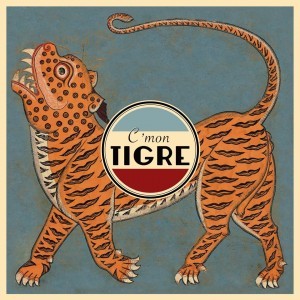
C’MON TIGRE – C’MON TIGRE (2014)
I C’mon Tigre sono figli del futuro.
Collettivo di sperimentatori, anime provenienti dal mondo con base in Italia, la loro musica, sinuosa ed evocativa, ondeggia in un limbo tra ethio-jazz, musica arabeggiante e morbido funk, sprigionando un caleidoscopio di luci e colori africani e un intero giardino di profumi mediterranei, ingredienti di un infuso i cui mille sapori più o meno speziati sfumano in qualcosa di nuovo, denso, sorprendente, una ricchezza di sensazioni che solo una vera amalgama culturale, lo scambio puro senza egemonie, può dare.
Verrà il giorno che il mondo sarà come la loro musica: ibrida e inclusiva. A dispetto di chi vuole tirare su ancora muri. (2 Dicembre 2016) (Luca’s ★★★★)
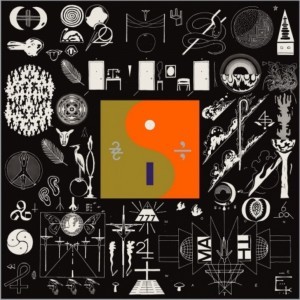
BON IVER – 22, A MILLION (2016)
Se 22, a Million non fosse di Bon Iver, il giudizio sarebbe sensibilmente migliore.
Ma io ho comprato un album di Bon Iver perchè volevo ascoltare un album di Bon Iver, non questa pur interessante cosa, dal sapore ipertecnologico e mellifluo allo stesso tempo. E purtroppo odio l’uso smodato di vocoder e simili.
Il problema, come spesso accade, sono le aspettative che ci creiamo.
L’artista è condannato a ripetere sé stesso all’infinito, pur di non scontentare i fan?
Non sia mai, l’artista ha sempre ragione, faccia un po’ ciò che si sente, comunichi con i canali che preferisce. È libero.
Ma sono libero pure io. (3 Ottobre 2016) (Luca’s ★★)
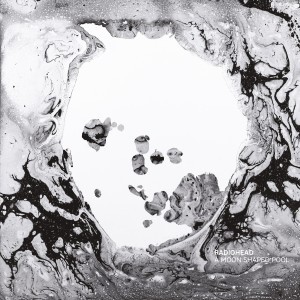
RADIOHEAD – A MOON SHAPED POOL (2016)
A Moon Shaped Pool, il nuovo album dei Radiohead: al primo ascolto è splendido, così trasparente nonostante racchiuda in sè un così vasto mondo sonoro, una bellezza diafana e un po’ malinconica che passando ti sfiora e lascia dietro di sè un’aura cristallina eppure gravida di senso.
Pur contenendo materiale non del tutto inedito oppure composto in periodi diversi, il disco risulta assai coerente per merito di una produzione delicata, quasi cameristica, un ambiente a tratti etereo che esalta piccole tensioni armoniche sotterranee: la band sembra aver rinunciato a rincorrere spasmodiche novità e complessità in favore di maggior chiarezza e una più adulta intimità, forse addirittura della ricerca di una certa grazia: una scelta a suo modo coraggiosa.
Credo sia l’unico album dei Radiohead che si possa descrivere anche solo con un’unica parola: bello. (8 Maggio 2016) (Luca’s ★★★1/2)

David Bowie – ★ (2016)
[EN]
At first listen, Bowie’s best effort since Heroes days.
Somehow, Bowie parable seems to me the same as Scott Walker’s (and partially David Sylvian’s, too): the awareness that time remaining is less and less (the fear of death is tangible in Blackstar music and related visual) permeates the music with pathos and frees it from stylistic and commercial laces in favor of freedom of expression and a renewed artistic curiosity, or maybe is just the desire not to leave behind just “songs”.
Of course, compared to TILT or MANAFON erratic movement, Blackstar remains more accessible and typical, but the spurts of KrautJazz, the general dryness of the sound, the structural irregularities and the disturbing atmospheres suggested, sharp and icy, make the Black Star a peak in the vast discography of the Thin White Duke. The last? (January 8, 2016) (Luca’s ★★★1/2)
[IT]
Al primo ascolto, il miglior Bowie dai tempi di Heroes.
Fatte le dovute tare, la parabola di Bowie mi sembra la stessa di Scott Walker (e parzialmente pure David Sylvian): la coscienza che di tempo ne rimane sempre meno (la paura della morte, nella musica di Blackstar e nel visual che l’accompagna, è tangibile) permea la musica di pathos e la svincola da lacci stilistici e laccioli commerciali in favore di una più libera espressione e rinnovata curiosità artistica, o magari solo voglia di non lasciare dietro di sé solo canzonette.
Certo, rispetto agli erratismi di Tilt o Manafon, Blackstar resta comunque più accessibile e canonico, ma le spruzzate di KrautJazz, la generale secchezza del sound, l’irregolarità strutturale e le disturbanti, gelide e taglienti atmosfere suggerite fanno della Stella Nera un picco nella sterminata discografia del Duca Bianco. L’ultimo? (8 Gennaio 2016) (Luca’s ★★★1/2)
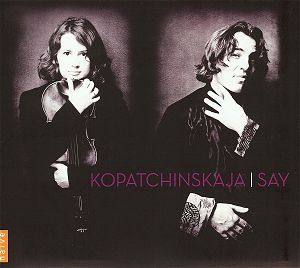
BEETHOVEN-RAVEL-BARTÓK-SAY (2008)
PATRICIA KOPATCHINSKAJA/FAZIL SAY
BEETHOVEN-RAVEL-BARTÓK-SAY (2008)
Di primo acchito la Sonata a Kreuzer della strana coppia Kopatchinskaja/Say è spiazzante, la rifiuti: un’interpretazione frenetica, impervia, a tratti persino violenta, sporca, confusa e imprecisa, col violino a fare l’ottovolante tra picchi dinamici ed emozionali e un pianoforte fortemente conflittuale e pure troppo protagonista, entrambi talvolta tesi a farsi inseguire invece che accompagnarsi in un percorso comune.
Ma quanta passione, che coinvolgimento!
I due dimenticano duecento anni di tradizione interpretativa che l’hanno ingessata e si appropriano della Sonata a Kreutzer regalandole nuova fiammante vita, ammantandola nuovamente di tutto l’’“oltraggio incomprensibile”, “eccesso sbalorditivo”, “stravaganza arbitraria” e “terrorismo artistico” che aveva suscitato nelle critiche alla sua pubblicazione, aggiornandola all’oggi e, per come la vedo io, umanizzandola.
Credo che Beethoven ne sarebbe contento: comunque sia, ora sarà per me più difficile ascoltare altre interpretazioni…
Se il picco del disco è sicuramente la Kreuzer, il discorso vale anche per la Sonata in Sol di Ravel -nella quale i sapori folklorici (sia europei che afroamericani) e le arditezze dinamiche (si sogna e ci si inerpica) e pure timbriche (nel Blues il pianoforte preparato a imitare le percussioni jazz) prendono il sopravvento sulla linearità, regalando intensità e contrasti a una composizione già di peculiarità non comune- e per le Danze Rumene, che sembrano composte apposta per essere interpretate dai nostri.
Peccato la Sonata finale, scritta dallo stesso Say e di cui francamente non si sentiva alcun bisogno, che fa calare il giudizio complessivo altrimenti molto positivo. (6 Dicembre 2015) (Luca’s ★★★1/2)
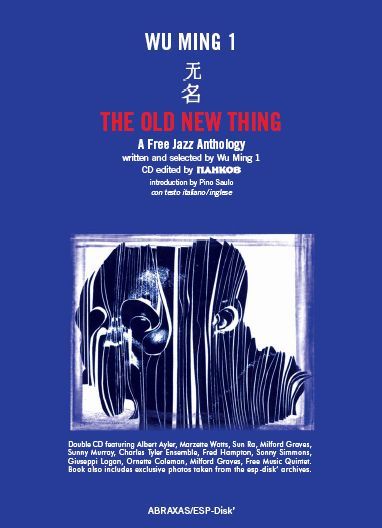
THE OLD NEW THING: A FREE JAZZ ANTHOLOGY (2006)
VARIOUS ARTISTS – THE OLD NEW THING: A FREE JAZZ ANTHOLOGY (2006)
La ESP-DISK’ è una delle etichette più meritevoli d’attenzione di sempre: radicalmente libera già dalla sua nascita (1964 a New York), lasciava carta bianca agli artisti su ciò che volevano registrare senza nessun tipo di controllo artistico o pressione commerciale, catalizzando così l’attenzione della crème della scena Free Jazz (e nel corso degli anni, del rock più underground), che faceva a gara per uscire per l’ESP.
Col tempo il catalogo dell’etichetta s’è riempito di capolavori dell’arte musicale più eterogenea e creativa (con qualche macchia masturbatoria, invero) ed è stato facile per WU MING 1 selezionare qualche gemma dal fondo di quel cesto delle meraviglie, farla a pezzi e stipare tutto un universo rivoluzionario in questi 2 piccoli CD, inanellando nomi che han fatto la storia del Jazz libero (ORNETTE COLEMAN, ALBERT AYLER, SUN RA) ad altri magari meno noti ma altrettanto seminali (GIUSEPPI LOGAN, MILFORD GRAVES, MARZETTE WATTS) in un flusso musicale a tratti irresistibile.
Il libro allegato contiene splendide fotografie spesso inedite dei protagonisti di quella rivoluzione, una scena che l’autore descrive con emozione ma un po’ sommariamente, a dire il vero.
Insomma: ottima introduzione per chi s’avvicina (curioso e aperto, pena il rifiuto) al Free Jazz, meno interessante per l’ascoltatore già appassionato.
(7 Ottobre 2015)
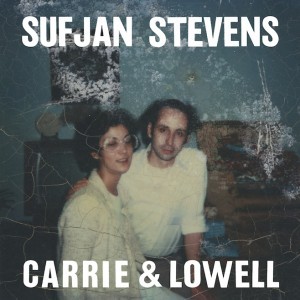
CARRIE & LOWELL (2015)
SUFJAN STEVENS – CARRIE & LOWELL (2015)
[EN]
Sufjan Stevens strips down his music of all frills and affectations that lately burdened it and, five years after the mediocre THE AGE OF ADZ, releases his best work, that is in fact an absolute masterpiece.
Rarefied and evanescent, mainly acoustic – a choice that tends to emphasize the full humanity as opposed to the ethereal constant doubling of the voice (coordinates are found somewhere between Nick Drake and Elliott Smith) – and only occasionally crossed by electronic drones – as if to suggest an atmosphere of disorientation of consciousness – Carrie & Lowell it’s about the difficult relationship between Sufjan and his mother suffering from psychic disorders – Carrie, who abandoned him at a very young age and who, after his second marriage with his stepfather Lowell, Stevens met sporadically, to fully find her again only near the end – and is one true path of reconciliation in music: grief, forgiveness, relief and acceptance, “all roads lead to an end”.
Fragile, transparent and truly inspired, Stevens elaborates his feelings with sincerity and newfound simplicity, sharing all emotions and regrets of a lifetime with memories often sketched with intimate and touching images, lightly telling us about joy and sorrow both brought as a gift from love, the one that it consumes and it renews the soul, giving them equal dignity, as if they can’t be separated one from another.
Never boring despite its simplicity, it’s music that touches and penetrates deep in the most unknown and untouchable depths of the soul, a catharsis full of meaning and beauty. (April 17, 2015)
[IT]
Sufjan Stevens spoglia la sua musica degli orpelli e delle moine che ultimamente l’appesantivano e, a distanza di cinque anni dal mediocre The Age of Adz, pubblica la sua opera migliore, anzi, un capolavoro assoluto.
Rarefatto ed evanescente, prevalentemente acustico (le coordinate si trovano a metà tra Nick Drake e Elliott Smith), scelta che tende a sottolinearne la piena umanità in contrapposizione con l’etereo costante raddoppio di voce, e solo occasionalmente attraversato da bordoni elettronici, quasi a sottintendere un’atmosfera di disorientamento della coscienza, Carrie & Lowell racconta il difficile rapporto di Sufjan con la mamma affetta da disturbi della psiche -Carrie, dalla quale venne abbandonato in tenerissima età e che, dopo il suo secondo matrimonio con il patrigno Lowell, Stevens frequentò solo sporadicamente, ritrovandola appieno solo in prossimità della fine- ed è uno vero e proprio percorso di riconciliazione in musica: afflizione, perdono, sollievo e accettazione, “tutte le strade portano a una fine”.
Fragile e trasparente, uno Stevens ispiratissimo elabora i suoi sentimenti con sincerità e ritrovata semplicità, rendendoci partecipi delle emozioni e dei rimpianti di una vita, memorie spesso accennate per immagini intime e toccanti, raccontando con levità la gioia e soprattutto il dolore portati in dono dall’amore, quello immenso, quello che consuma e rinnova, dando loro uguale dignità come se una non possa prescindere dall’altro.
Mai banale pur nella sua essenzialità, è musica che tocca nel profondo e s’insinua nei meandri più sconosciuti e intoccabili dell’animo, una catarsi colma di senso e bellezza. (17 Aprile 2015) (Luca’s ★★★1/2)
KARLHEINZ STOCKHAUSEN – SAMSTAG AUS LICHT (1988)
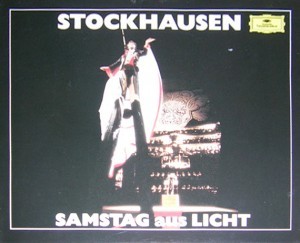
SAMSTAG AUS LICHT (1988)
Con Stockhausen di solito sono diffidente: mi è capitato di trovarlo gratuito nelle sue espressioni più estreme (Helikopter-Quartett, per esempio) oppure un po’ povero di senso estetico (come in alcuni suoi peraltro interessantissimi e storicamente fondanti lavori elettronici).
Trovo invece spesso impressionanti i suoi lavori orchestrali (tipo Gruppen per tre orchestre), lavori d’intensità e impatto sonoro incredibili, superati in complessità (e in cattiveria) solo da FERNEYHOUGH, GUERRERO o XENAKIS)
Date le premesse, ho ascoltato per la prima volta Samstag aus Licht in cuffia, sdraiato sul divano, col cuore in mano: tre ore e un quarto di puro deliquio.
Celebrazione del Sabato come il giorno di Lucifero e sesto capitolo di Licht, ciclo della Luce Eterna e dei Sette giorni della settimana concepito da Stockhausen per non avere inizio né termine, Samstag è opera bellissima e musicalmente assai coinvolgente: si compone di un’introduzione e quattro parti ben distinte per orchestrazione (si passa con incredibile naturalezza da possenti e impetuosi pieni di ottoni a minimali cluster pianistici che sostengono una tessitura di fischi e sussurri, da una giungla di motivi ritmici rarefatti che accompagna un flauto a tratti quasi pastorale a voci gutturali su inquietanti bordoni a formare un ibrido tra il coro da chiesa e il sabba infernale) il cui tipo di scrittura, nel serialismo imperante, ondeggia tra cromatismo, atonalità e modalità orientali e contiene addirittura elementi di microtonalità e spettralismo.
Il complesso è un flusso continuo, la lenta e naturale evocazione di un universo poetico scurissimo, immenso e davvero ottundente.
Questa è la prima edizione, registrata alla Scala di Milano: a un certo punto dell’opera viene simulato lo sciopero degli orchestrali, con un magnifico PIERO MAZZARELLA a cercare di fare da paciere. (19 Gennaio 2015)
FABRIZIO DE ANDRÉ – CANZONI (1974)

Più alti (anzi, altissimi) che bassi (pochi, tra cui la Desolation Row Degregoriana, che tra l’altro trovo metricamente piuttosto scombinata) in un disco che vede un altalenante De Andrè alle prese con classici altrui e vecchi cavalli di battaglia ma che contiene una delle canzoni della mia vita: la commovente “Le passanti”, tenero inno alle occasioni perdute se possibile ancora più bella dell’originale di Brassens. Lo amo e lo ringrazio anche solo per questo. (24 Dicembre 2014)
THE CLASH – SANDINISTA! (1980)
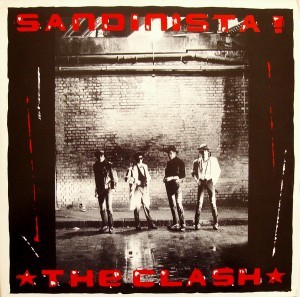
Davvero troppa carne al fuoco.
Soprattutto, tra succulente salsicce (“The Magnificent Seven”), gustose braciole (“Ivan Meets G.I. Joe”) e stuzzicanti costine (“Police on My Back”, “The Call Up”), le frattaglie la fanno da padrone: alla fine la panza è piena e qualcosa s’è assaporato, ma la testa s’è fatta pesante, le palpebre si chiudono e la vista si annebbia… nausea? (19 Novembre 2011) (Luca’s ★★1/2)
BLUR – 13 (1999)

13 is a splendid art pop album, probably Blur’s more consistent, surely their best: mature, ambitious, jumbling yet somehow cohesive (even thanks to all song intros, codas and sketched interludes that tie up everything in a strange and shimmering alloy) and overall extremely entertaining even in the most melancholic and intimate episodes.
Never truly experimental at any point (except for some arrangement solution, that I would rather call “progressive”), 13 is nevertheless deeply creative, some kind of contemplative album, almost for Blur’s standards: parklife days are gone…
Great songs are scattered all over the grooves: “Coffee & TV”, which, despite of its lyrics, it’s my personal favorite feel-good-song ever; the syncopated electronic aggression of “Battle”; the saddest psychedelic nursery rhyme ever “Caramel”, Blur’s true masterpiece; the progressively distorted breaking-up ballads “1992” and “No Distance Left to Run”; the decomposing guitar cavalcade “Trimm Trabb”; the straight synth punk a-la BRAINIAC of “Burgman” and of course the jamming gospel “Tender” (that frankly could have stopped halfway through without losing anything).
But even minor episodes are fun, as the echoes of future GORILLAZ in “Trailerpark”; the muddy “Swamp Song”; the pop perfection of “Mellow Song” and even the demented poppy prank “B.L.U.R.E.M.I.”.
WILLIAM ORBIT layered production gives a boost to an album that is both complex and direct, concrete and indefinite, romantic and cruel: britpop final and best heirloom.
[A review in true 90s spirit would have been: 13 is the album OASIS only dreamed of, if ever they had any creative sleep] (March 24, 2009) (Luca’s ★★★1/2)

JOANNA NEWSOM − YS (2006)
In my humble opinion, these zeros are pretty disappointing years: very few records are truly noteworthy and those are being found pretty hardly, too.
Then came Ys…
Ys!
Ys is the disarming beauty, constantly growing and finding new space at every new listen: deeply touching, widens the heart.
Ys rises wonder and bliss, gazing you intensely in the eyes while grazing your soul with kindness, evoking the mythical island, the cathedral, the birds, the feelings and deeds of men, the siren, the stars, Finis terrae.
Ys has the power to refer to everything, halfway between popular tradition and high culture, between folk and art music, yet it has nothing to do with anything done before (STORMCOCK included, dear Sirs): it’s in the same time timeless, here and now, hybrid and pure.
Ys only skews perfection ‘cause of Van Dyke Parks arrangements that, while wonderful in itself, here and there goes too far with stings magniloquence rather than leave to silence: some kind of misunderstanding, ‘cause Joanna’s music is indeed ambitious yet it’s that much justly confident of its valor that any gimmickry could have been avoided (as live versions of these songs can confirm).
If the world was a fair place, this album would rank far higher in the 2000′s decade charts already popping out, yet truth is the daughter of time…(February 17, 2009)
PERE UBU – APOCALYPSE NOW (1999)
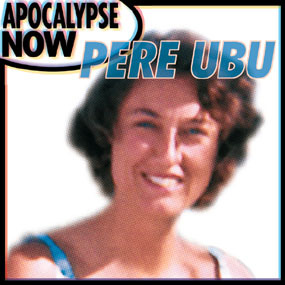
A live recording in Chicago by 1991’s Ubu lineup, with Jim Jones on acoustic guitar (only occasional distorted), Eric Drew Feldman at the honky tonk upright piano instead of synth, Tony Maimone on bass and (acoustic) guitar and Scott Krauss on drums.
Apocalypse is now and it starts somewhat softly and gently with “My Theory of Spontaneous Simultude”, one of Thomas’ best cut from his solo career, it gets harsher when “Words in collision” starts, reaches its peak halfway the gig with the distorted punk of the “Non-Alignment Pact/I Wanna Be Your Dog” medley, then gradually calms down giving some space to fun, as an apocalypse it’s something we can laugh upon, once it has passed, in true Ubu-ist surrealistic style.
David Thomas in great form entertain the audience with a flow of witty tricks and visionary pillows for an evening of pure enjoyment. A pity the recording quality, not exactly top notch.
(October 12, 2006) (Luca’s ★★★1/2)
PERE UBU – DUB HOUSING (1978)

[EN]
Ten months only after the incendiary THE MODERN DANCE, Pere Ubu publish a new masterpiece, showing vitality, creativity and intellectual clarity to such an extent that have few precedents in the field of popular music.
A more professional and balanced album than the previous, Dub Housing is filled with palpable desolation and anguish in an hallucinating and bleak climate: first album ritualistic and mechanical impetus deaden out, their music subsides and becomes more abstract.
Beginning with the tribal and absurd “Navvy” which, amid David Thomas shrieks and Tom Herman guitar sobs, refers to the spirit of The Modern Dance, Dub Housing’s first side goes on with “On the Surface”, a jovial hymn to superficiality clocked by a lively and nervous synth. Then “Dub Housing”, that lives on a background made of a rarefied piano, an ostinato bass line and the lashes of a dissonant clarinet, on which the excruciating cries of the singer are repeatedly answered (We Know…) by a detached chorus: a representation of loneliness, inability to communicate and the world’s indifference to human affairs. “Caligari’s Mirror”, perhaps the album musical peak, is a festival of improvised dissonances in a tremendous atmosphere of anguish, feeling that pervades “Thriller!” too, another musique concrète pièce which seems to pick up where “Sentimental Journey” had left and, amidst live vocals and progressive distortions, refers directly to avant-garde.
“I Will Wait” opens the second side apparently brightening up the climate a bit and is a new example of intricate and primitive modern dance, as well as “(PA) Ubu Dance Party” which, marked by small guitar riffs, cheerfully celebrates the apathy and detachment from worldly things. If “Drinking Wine Spodyody” is an harmonically stuttering little march, “Blow Daddy-o” (probably extensively studied by HÜSKER DÜ for their “Recurring Dream”) returns to pure experimentalism with interferences and rhythmic interventions dilated on a disturbing distorted synth loop. “Codex”, the depressed and depressing delirium of a lonely man haunted by memories, is the final fragment of Pere Ubu’s second masterpiece.
From the sociological and anthropological analysis made on the debut album upon depersonalization in post-industrial era, the band exploration moves to a dissection of survivors’ psyche and spirit: the dances on the debris of modernity are over, Dub Housing shows the contemporary Man, exhausted, becoming aware of his loneliness and of the frightening futility of everything he’s been surrounded of.
On a stylistic scale this is expressed by transferring weight from the neurotic and disconnected funk-punk to a darker and more dilated psychedelia, nevertheless conducting the train of thought so well that The Modern Dance and Dub Housing musically can be considered a double album, as much as they form a perfect conceptual diptych: an accomplished excursus in music throughout the agony of the Man proceeding towards a surreal self-destruction, torn to pieces by the modernity created by himself. [based on a review of October 1996]
(October 12, 2006) (Luca’s ★★★★★)
[IT]
A distanza di soli dieci mesi dal dirompente The Modern Dance, i Pere Ubu pubblicano un nuovo capolavoro, a dimostrazione di una vitalità, una creatività e una chiarezza intellettuale che trovano pochissimi precedenti in ambito di musica popolare.
Disco più professionale e ragionato del precedente, Dub Housing è pervaso da desolazione e angoscia palpabili, in un clima allucinato e sinistro: smorzato l’impeto ritualistico e meccanico del primo disco, la musica si placa e si fa più astratta.
Si comincia con “Navvy” che, tribale e assurda, tra grida scomposte e singhiozzi di chitarra rimanda al clima dell’album d’esordio; si continua con “On the Surface”, un gioviale inno alla superficialità cadenzato da un vivace e nervoso synth. Ecco quindi “Dub Housing”, che vive su un sottofondo rarefatto di pianoforte, un basso ostinato e le sferzate di un clarinetto dissonante, sui quali i lamenti strazianti di Thomas trovano risposta nel reiterato distacco di un corale We Know: una rappresentazione della solitudine, dell’incapacità di comunicare e dell’indifferenza del mondo alle umane vicende. “Caligari’s mirror”, forse il vertice musicale del disco, è un festival di improvvisazioni dissonanti in un tremendo clima di angoscia, sentimento che pervade anche “Thriller!”, altra pièce rumorista che sembra ricominciare da dove “Sentimental Journey” ci aveva lasciati e che, tra voci trovate e distorsioni progressive, rimanda direttamente all’avanguardia.
“I, Will Wait” apre il secondo lato rasserenando apparentemente il clima con un nuovo esempio di danza moderna intricata e primitiva, così come fa “(PA) Ubu Dance Party” la quale, scandita da un piccolo riff di chitarra, celebra allegramente l’apatia e il distacco dalle cose del mondo. Se “Drinking Wine Spodyody” è una piccola marcetta armonicamente balbettante, in “Blow Daddy-o” (con ogni probabilità studiata a fondo dagli Hüsker Dü di “Recurring Dream”) si ritorna alla sperimentazione più pura in cui, su un inquietante loop distorto di synth, si dilatano interferenze ed interventi ritmici. “Codex”, depresso e deprimente delirio di un’uomo solo e ossessionato dai ricordi, è il frammento conclusivo di un album a suo modo commovente.
Dall’analisi sociologica e antropologica sulla spersonalizzazione propria dell’era post-industriale del disco di debutto, l’esplorazione di David Thomas e compagni si sposta dunque alla scansione di psiche e spirito dei sopravvissuti: le danze sulle macerie della modernità sono terminate, Dub Housing è la rappresentazione dell’uomo contemporaneo che, stremato, prende coscienza della sua solitudine e della spaventosa inutilità di tutto ciò di cui lo hanno circondato.
Sulla bilancia stilistica ciò si esprime trasferendo peso dal piatto del funk-punk nevrotico e sconnesso a quello di una più cupa e dilatata psichedelia senza peraltro smarrire il filo del discorso, tanto che The Modern Dance e Dub Housing possono musicalmente considerarsi un doppio album, tanto quanto concettualmente formano un dittico perfetto: un excursus completo attraverso l’agonia dell’uomo avviato verso una surreale autodistruzione, fatto a pezzi dalla modernità da lui stesso creata. (12 Ottobre 2006) (Luca’s ★★★★★)
GREEN DAY – AMERICAN IDIOT (2004)
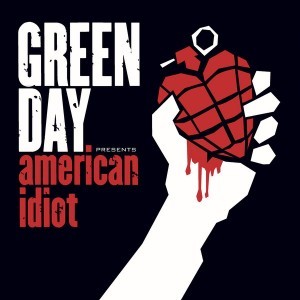
My son (10 yo) loves a bunch of songs here included, so American Idiot is on high rotation in my house in this very moment.
And, let’s say it: overall the whole album is more than listenable and it seems a pretty good one to drive with, indeed, so full of catchy tunes and that right amount of belligerency as it is, even if it’s set nowhere near the word “interesting” and perhaps the world “enduring”, too.
The best Green Day album so far, could even become some kind of classic of nowadays rock music: that said, just leave the world “punk” alone, please. (October 18, 2004)
KATE BUSH – HOUNDS OF LOVE (1985)

It has some really outstanding moments, with the usual brilliant and eclectic songwriting and a fascinating experimental production, just maybe a little too opulent here and there.
A landmark album for a whole scene of eccentric female singer/songwriter (BJÖRK, TORI AMOS and so on), to be reductive.
And, whatever my tastes, this is deep music. (May 6, 2009)
SEBADOH – ROCKING THE FOREST (1992)
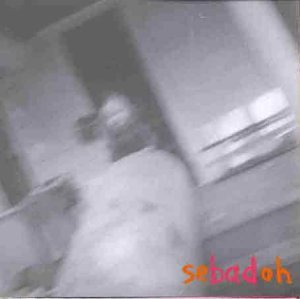
The perfect sample of Sebadoh’s finest moment.
Without all the prolixities of previous album III, Rocking the Forest in fact includes some archetypal indie cracked tracks: sweet and poppy here (“Really Insane II”), pretty nuts there (indeed: listen to”Cry Sis”), a pair of classics (“Gimme Indie Rock” rules) and most of all pure “sulky” fun allover.
Oh, how I miss the times when Sebadoh were the norm…(May 6, 2009)
THE ASSOCIATES – FOURTH DRAWER DOWN (1981)
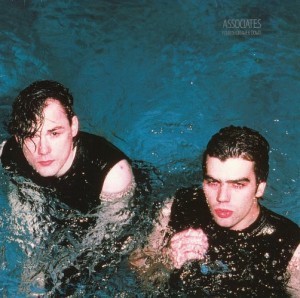
Mutant pop for alien people.
Synthetic yet soulful, glam yet experimental, linear yet skewed, sensual but not lascivious, nocturnal but not depressing, softly harsh and naturally doped: the second Associates effort gathers 4 singles but stands as a perfectly homogeneous album and results in an absolutely unique work: “A Girl Named Property”, “Q Quarters” and “Message Oblique Speech” are pure love, and so it is the out of axis sound they cooked up.
In short: a true (pop?) masterpiece.
The CD reissue has some bonus including “Point Si”, another treasure from the same sessions. (May 6, 2009)
FIRE ENGINES – LUBRICATE YOUR LIVING ROOM (1980)
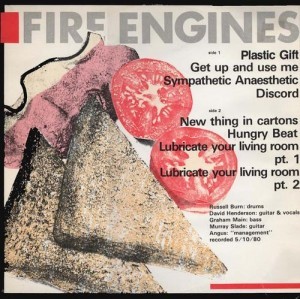
pilectic dances on burning embers.
Unlike their fellow citizens JOSEF K existentialist stuff, Fire Engines’ mood is still nervous but almost bright and somehow positively naive: they seem to enjoy playing their music without any other goal than make some arty guitar-oriented oblique dance-pop.
An lively odd album, very fun to listen to. (April 29, 2009)
SONIC YOUTH – SONIC NURSE (2004)
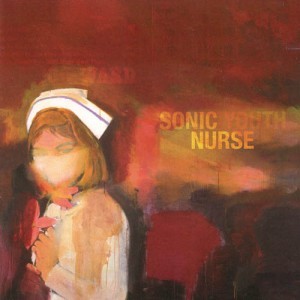
I don’t know if Sonic Youth made a good deal engaging Mr. O’ROURKE.
I mean, over the four years he has been an official member of the band, they gradually polished their sound and the result is that here they seem a sedate, limited, clean and moderate copy of what they were: soft rhythm flows, not a single note out of place, distortions and dissonances too accurate and somehow subdued as they are an ornament.
Well, maybe it’s not Jim O’Rourke’s fault: maybe they just matured, trying to reach a wider range of public, leaving noise and experimentations to SYR issues only…
In any case the change is evident, and it’s like they lost a bit of their soul: I sometimes feel like I’m listening to POLYROCK 25 years after and it’s a pity ‘cause, set-aside the production, many songs here are good: Nurse could have been a really great album for present Sonic Youth standards, if only was a bit more instinctive, or true. (April 26, 2009)
SIGUR RÓS – HVARF / HEIM (2007)
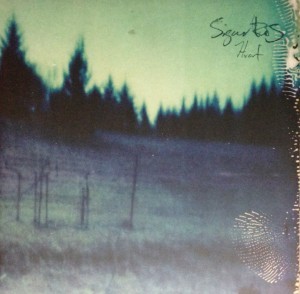
Sigur Rós ordinary work, basically made of aesthetically beautiful almost lifeless music.
Hvarf disc is in fact the same old soup, only heated up once more: calm yet elaborate mistakes in disguise, musical lies masked under pseudo-orchestral crescendos and ambient electronic tricks.
With Heim we find the band in a quasi-acoustic set and, stripped of most of their precious electronic expedient which give colors to their music, many songs reveal their flatness and essential irrelevance. (April 10th, 2009)
SHELLAC – EXCELLENT ITALIAN GREYHOUND (2007)
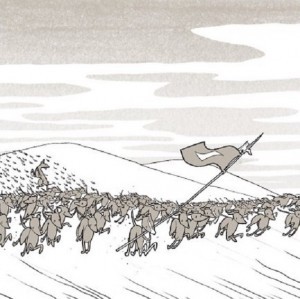
I do LOVE Shellac.
In Excellent Italian Greyhound Steve Albini and co. manage to deliver a more straightforward version of their music while rephrasing rock canon one more time in the weirdest fashion.
The scattered pulsating a cappella mayhem “Genuine Lulabelle”, together with the acute declamation of “The End of Radio”, are the album core and are in fact far from being the expected Shellac: apparently meditative and nearly shamanic, they are an example of how could quietness be intense and even explosive more than violent reiteration.
Anyway, both the usual perfect polyrhythmic and dry dissonant interweaving surround the two longer tracks, only less wicked and more emotive than 15 years ago. (April 1st, 2009)
SLINT – LIVE IN CHICAGO, IL 3/3/89 (1989)
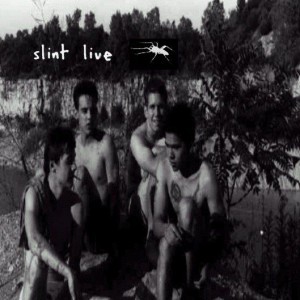
Medium quality bootleg, with some truncated song and some guitar and vocals sometimes left behind unwanted frequencies and distortions.
Still a good attestation of how Slint sounded live back in their early days and, well, they sounded pretty like as studio.
This come as support to something that was already significant to me:
A) their mastery of instruments was great but always in total attendance to the plot line;
B) their severe music left almost nothing to individuals and their drives;
C) their vision was already complete and finished, with all the strength and weaknesses this could imply.
What a surprise in the end the cover of NEIL YOUNG’s “Cortez the Killer”, in my humble opinion stronger than the original. (31st March 2009)
ALTERNATIVE TV – VIBING UP THE SENILE MAN (PART ONE) (1979)
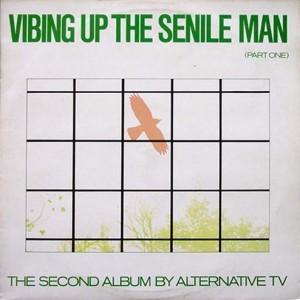
A splendid album! Difficult to digest, sure, but stupendously paranoid.
Mark Perry declaiming upon disconnected, disjointed and dissociated scarce sounds made with the first instrument within reach, better if out of tune or jangled, all imperatively “take one”: it could even have a sense, who knows?
But here lies the beauty of this album: the complete (apparent?) musical non-sense, the freedom of concept and its equally free practice, the primeval (and childish) mess that finds his own flow: forget the punk, this was the future.
Plus, let’s say it, “Facing Up to the Facts” and “The Good Missionary” are just a pair of great songs.
By the way, one’s fondness for this album will permit to measure how cerebral is his approach to music…(30th March 2009)
DISCO INFERNO – TECHNICOLOUR (1996)
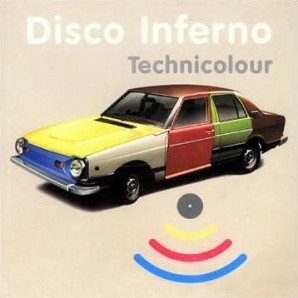
And then they went pop.
Two years after the arty and mildly experimental Go Pop, for their second album Disco Inferno held back the noise focusing more on melodies and structures: actually Technicolour it’s still distorted, overlayered and weird, but it’s finally a collection of pop songs indeed, in which they only wedge anything that come off the top of their heads turning it in a kaleidoscopic yet welcoming outcome.
With this album, I feel I’m listening to an heftier, rockier and iridescent version of BELLE AND SEBASTIAN.
A lovely record, anyway. (30th March 2009)
DISCO INFERNO – OPEN DOORS, CLOSED WINDOWS (1991)
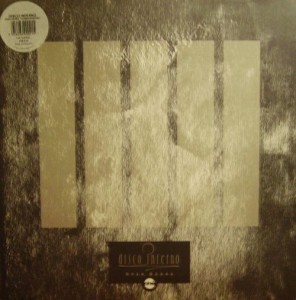
Early Disco Inferno music is quite disappointing and not impressive at all: vanishing melodic lines and some singing not worth to be heard ruin any good minimalistic meadow the guitar and bass entwined are able to picture.
NEW ORDER and FELT made the same record 10 years before, far better than Disco Inferno. I’m sorry.
Fortunately they will find their way a couple of years later, with the splendid Go Pop. (30th March 2009)
ELVIS COSTELLO – THIS YEAR’S MODEL (1978)
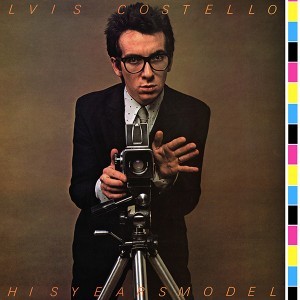
Given that I do not care about lyrics when not supported with almost pleasant music (else, what books are made for?), there seems to be no way for me to enjoy Costello’s music, because of his unnecessary slapdash attitude, because of his insincere easy-going singing, because of his mediocre melodies and his coarse and cheesy arrangements, etc.
Over the years (hey, I’m trying since mid 80’s) and after repeated attempts I’m afraid I didn’t have any change of heart.
Am I really so cold, numb, heartless and ultimately such a sad man?
Am I?
No, I’m not.
Actually, “Lipstick Vogue” is a good song. (27th March 2009)
DJAM KARET – REFLECTIONS FROM THE FIREPOOL (1989)
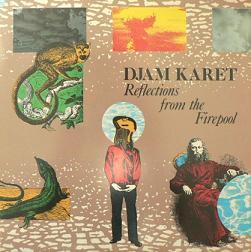
Technically striking, it’s a shame they waste their talent in pointless long cocked-up instrumentals.
Not a single noteworthy song (maybe “All Doors Look Alike”, hither and thither), but at least they have the intelligence to spare us from virtuoso nonsenses and have their own peculiar sound.
By the way, it’s incredible how often progressive rock nowadays generally gives no sign of life under its smooth skin. (24th Macrh 2009) By Luca ★★
JOSEF K – THE ONLY FUN IN TOWN (1981)
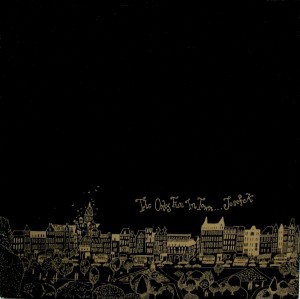
With a sound inspired either by early WIRE (angular without the nerviness) and JOY DIVISION (pessimist without the impending death climate), Josef K nocturnal and intellectual funk-punk was one of the most staggering yet intriguing act of its time (and in fact will be imitated by many, especially mid-2000s Post-Punk Revival bands like Franz Ferdinand).
Most of the songs here are pivot on a simple riff and a nervous impetuous rhythm, as punk teaches: still, it’s the palpable coldness with which they treat either depression and fun what makes The Only Fun in Town great. (12th February 2007)
BRAINIAC – ELECTRO-SHOCK FOR PRESIDENT (1997)
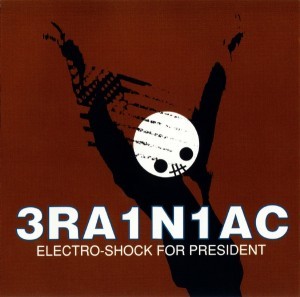
GASTR DEL SOL, U.S. MAPLE, BRISE-GLACE, SMOG: c’è stato un momento, a metà anni ‘90, in cui qualsiasi cosa JIM O’ROURKE toccasse sembrava destinato a tramutarsi in oro.
A fine 1996 anche i Brainiac salutarono STEVE ALBINI, artefice del fantastico HISSING PRIGS IN STATIC COUTURE, e si affidarono al genietto di Chicago per dare una nuova svolta al loro sound: in Electro-Shock for President, piccolo assaggio di quello che sarebbe potuto essere il quarto album della band se un maledetto incidente non si fosse portato via Timmy Taylor, ecco quindi O’Rourke vestire i panni di SUSAN CALVIN e dirigere un’orchestra di apparecchi domestici evoluti alle prese con attacchi psicotici di varia natura, 15 minuti in cui pare di ascoltare quattro androidi mettere in discussione le leggi della robotica a colpi di intrecci meccanici, cazzeggio indie-pop e sferzate post-hardcore.
Credo che i RADIOHEAD abbiano ascoltato queste tracce con molta attenzione, durante la gestazione di Kid A e Amnesiac. (14th October 2006)
MAUDLIN OF THE WELL – PART THE SECOND (2009)
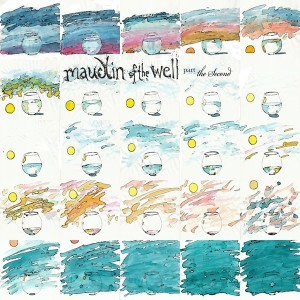
A spoonful of Yes, King Crimson and Van der Graaf Generator mixed soup corrected with a KRANKY liquor, added of a pinch of dark smooth metal sauce and served with silverware.
Musically the album is brilliant (some rarefied environments above all) and it’s by far their best effort to date. Plus, value added, they indulge in pointless solos as little as possible.
So everything is fine, but a question: who needs an album of 1971 in 2009? (5th June 2009)
ANDREW BIRD – WEATHER SYSTEMS (2003)
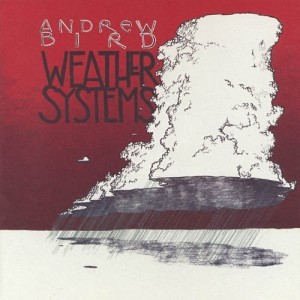
A splendid chamber pop little album by an Andrew Bird in top form. Maybe his best record: intimate and touching, as some kind of a more serene and hopeful JEFF BUCKLEY would have done.
Many classics of future live shows are here: “I”, “Action/Adventure”, “Weather System”, “Skin”. (20th May 2009)
ANDREW BIRD – FINGERLINGS (2002)
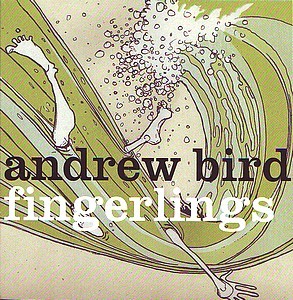
I bought this CD yesterday night at the merchandise table of Andrew Bird concert here in Milan, just to try to prolong at home the magic of that evening, because Mr.Bird’s one-man-band live shows are a reiterate magic moment, thanks to the scarce but peculiar instrumentation (a violin also played as a mandolin, an acoustic guitar, a xylophone, his whistling) and Bird’s gorgeous method of live-sound construction (immediate sampling of played parts then layered with loop pedals to have a “full band” behind), even if obviously some of these moments can also be a bit too similar to others, in structure and color.
This collection gathers songs from early shows of our hero, some of them in solos, some with NORA O’CONNOR only and in the end with the full BOWL OF FIRE, in a crescendo from intimate ballads to lively square dances: brilliant. (19th May 2009)
TWINK – THINK PINK (1970)
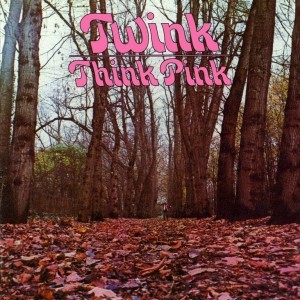
Wow, this is way outer than expected.
Psychedelic jams / acid ragas, direct emanations of an synthetically enchanted mind that sees mexicans having orgy climax, the lord coming called from netherworld, majick fluids floating, stoned lullabies from the pigsty and suicides at the gates of dawn, everything while guitars embroider looooong excursions as soon as possible.
This man had a vision. Better: he had repeated artificially induced visions. (15th May 2009)
TALL DWARFS – HELLO CRUEL WORLD (1987)
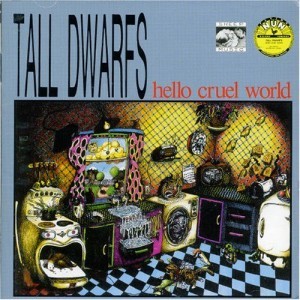
A collection of New Zealand’s weirdest band first 4 EPs:
Three Songs (1981), where “Nothing’s Going to Happen” could easily be confused for a Sebadoh song while “All My Hollowness to You” presents some stoned Beatles. In the middle “Luck or Loveliness”, a psychotic short journey that Alastair Galbraith (and Pumice) seem to have rote learned: in and out influences for a band that was special since their first effort.
Louis Likes His Daily Dip (1982), probably their peak of absolute gorgeousness, seven songs in which they creatively blend Half Japanese’s noisy oddities, The Beatles’ pop melodies and The Residents’ proto-electronics without any intellectual claim but only for the sake of it.
Canned Music (1983), that moves between some primitive electronic excursions and a lot of lo-fi slanting rock there’s “Woman”, that is splendidly sinister.
Slugbucket (Slugbuckethairybreathmonster) (1984), where the band get to grips with some r’n’r and other frenetic rides but with a more mature and somehow psychedelic (but still lo-fi) sound than in previous EPs. Knox and Bathgate peculiar pop attitude was misplaced for its times: they invented indie-rock but almost no one seemed to notice. A not-to-be-missed compilation for anyone involved in creative simple music. (15th May 2009)
VELVET MONKEYS – ROTTING CORPSE AU GO-GO (1989)
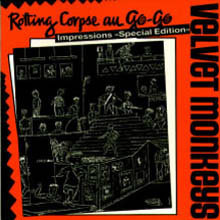
A collection of some Velvet Monkeys song before they became an indie super-group: it’s very heterogeneous in influences (their vocabulary was highly varied) but sadly the result it’s pretty volatile too: songwriting is often weak and sound is quite gross without being neither fish nor fowl, as they were undecided if stay on the main road or try some dustier path.
Highs and lows are continuous and, in the end, the hop along bland heavy/garage/psychedelia/pop/etc never taking a stand annoys me a bit. (15th May 2009)
CRANES – WINGS OF JOY (1991)
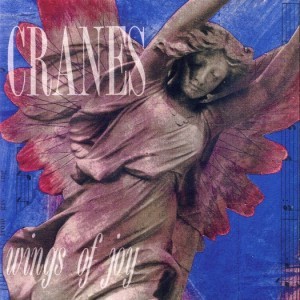
A charismatic sound and most of all Alison Shaw childish voice give some estranging effect to some otherwise evoking but a bit scholastic dream-gothic minimal pop. The matter is that Alison’s interpretation is about the same (flat?) in every track and her voice hardly stands out between the lush sound of the band, resulting a bit monotonous, in the long run.
Still, I can’t deny that “Tomorrow’s Tears” and “Beautiful Sadness” used to make my days, years ago.
KATE BUSH – THE DREAMING (1982)
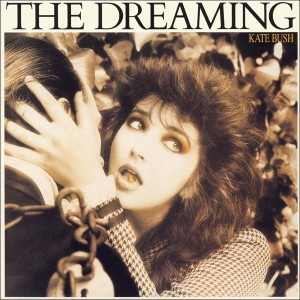
Her “mad album”, as she later declared and, actually, forget the kindness of her previous works: this is tough.
A work nearly perfect in its kaleidoscope of states of mind and heart: innovative, eccentric, diverse, soulful, passionate, witty, tender and somehow violent. In one word: luxuriant.
And, just to understand how much ahead, the title-track itself has the feeling (if not more) of Björk’s “EARTH INTRUDERS”, 25 years before.
Many are the moments of excellence: the palpable fear of “Pull Out the Pin”, the dreaming ballad “All the Love”, the unpredictable “Leave It Open”, the emotional “Houdini” and the scarily evocative “Get Out of My House”, but the whole album is consistent (except the coda of “Sat in Your Lap”: I can’t stand it!) and is full of beautiful music allover, in a true crescendo of strength and pathos. Young cute Kate has become a wonderful musical animal. (13th May 2009)
THE ASSOCIATES – THE AFFECTIONATE PUNCH (1980)
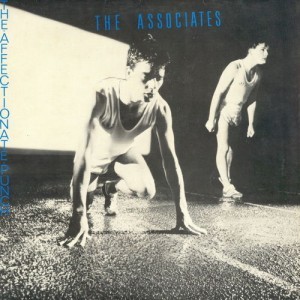
★★
A handful of great songs, minimalist and dry, for an album already showing all Associates edgy character, just the more vague the more the B side is reaching the end.
According also to both covers, I consider The Affectionate Punch as the springboard that took to FOURTH DRAWER DOWN multicolored melt away. (8th May 2009)
TIME OF ORCHIDS – SARCAST WHILE (2005)
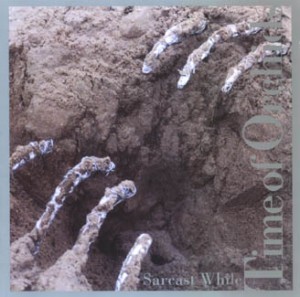
It’s like some heavier THINKING PLAGUE or, better, YES gently raped by SLEEPYTIME GORILLA MUSEUM under the moonlight and with loads of vaseline.
Evolving and revolving music that constantly grows: many episodes are good (mainly “A Man to Hide” and some sketched interludes) and the utterly polished and well-conceived sound gives great elegance to the whole work, but I can see an artificial tension toward a perpetual melodic and harmonic weirdness, never truly surprising, original or remarkable and that in the long run tires me out, being the process constantly the same, basically ending in itself. (7th May 2009)
HEADLESS HEROES – THE SILENCE OF LOVE (2008)
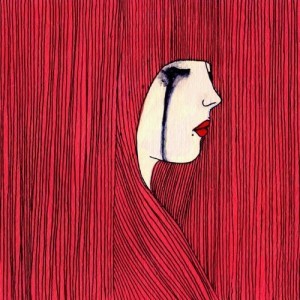
Maybe it’s just a question of being caught unprepared, but Alela as kinda chanteuse it’s something really estranging and not completely convincing.
Yet, set aside expectations, the song choice is quite odd and the mood is smooth and dreamy, so that The Silence of Love still results as a pretty enjoyable album. (7th May 2009)
ANDREW BIRD – NOBLE BEAST (2009)
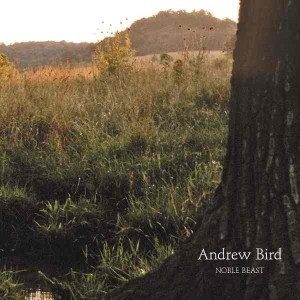
A step back from previous albums, as the formula begins to show signs of stagnation and the inspiration seems to limp along a bit.
In some moments (namely “Effigy” and from “Nomenclature” to “Anonanimal”) the quality is still high, but the whole work get lost in many moments of déjà vu and suffers of over-orchestration, loosing the dazzling but intimate beauty his music reveals in live shows. (2oth January 2009)
TUXEDOMOON – NO TEARS (1978)
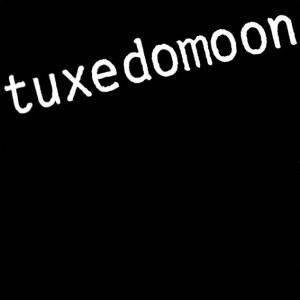
Absolutely great.
They were still developing and refining their sound, so here you can find a rougher version of what was to come later: imagine some “chamber-punk”, if possible.
All the four songs here present (including Cole Porter’s “Night and Day” twisted and futuristic cover) have a splendid minimal-depressing yet direct mood, and without a doubt are some of the best pieces composed by the band ever.
Also, the EP short format helps the enjoyment, avoiding any sense of prolixity Tuxedomoon music may arouse. (7th May 2009)
SCRITTI POLITTI – SKANK BLOC BOLOGNA (1978)
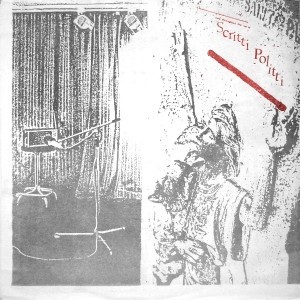
Three metallic, dry, broken and dubbing songs on the verge of punk but in an odd, personal way.
With a sound halfway between WIRE and GANG OF FOUR, Scritti Politti use of melody is already unmistakable but not yet predominant, being entwined with the brilliance of the guitar and responding to (while held up by) the precise and insistent rhythm section, to form a bunch of songs of democratic and oblique beauty.
“Skank Bloc Bologna” is one of the gems of post punk. (10th November 2006)
ROYAL TRUX – TWIN INFINITIVES (1990)
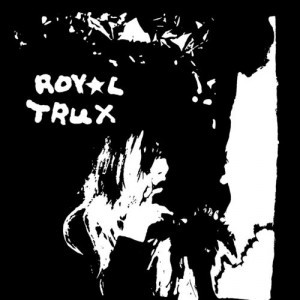
A mortal blow to decency, a hymn to decadence.
TROUT MASK REPLICA played by THE SHAGGS just escaped from the sanatorium carrying the electro-shock machine along with the medicine cabinet: for some this could sound as the description of a fine avantgarde record, but I won’t be so sure… (1st November 2006)
THE ASTRONAUTS – PETER PAN HITS THE SUBURBS (1981)
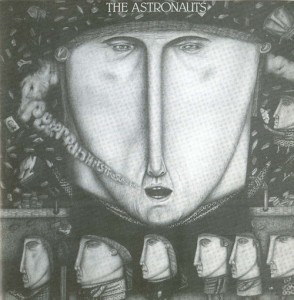
Hippie-punk?
First album by english anarcho-punk collective lead by MARK ASTRONAUT, Peter Pan Hits the Suburbs (a declaration of intent starting from the title itself) is a study on the loss of innocence made through rotting naivety.
The lyrics mainly focus on lives of ordinary men, the sound is dry, chaotic and amateurish even with the use of non-rock instruments, some kind of THE FALL tending towards primitivism and totally loose: here we have to deal with rough acoustic folk pieces, carnival music, free-form jams (with the help of masters like LOL COXHILL) and even suites worthy of some psychedelic-folk act like THE INCREDIBLE STRING BAND or COMUS. It seems they’re clumsily decomposing folk and pop ambiences burying them in lysergic freedom and punk dissonances with a both naive and rotten attitude.
The flaw is that the mixture somewhere sounds as a kind of indecisiveness, lacking the strength only a pondered and clear stylistic choice can have. But this was the goal, indeed: collecting everything comes in handy for the sake of pure freedom of expression. (25th June 2009)
AUFGEHOBEN – KHORA (2008)
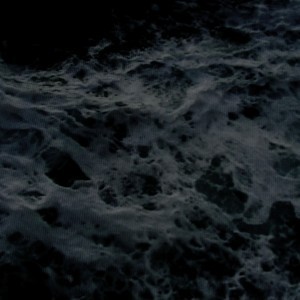
Khora, 4th album by londoners brutal extremists Aufgehoben, is a true cascade of noise, very (very!) loud, very (very!) distorted, virtually unintelligible, absolutely unstoppable: the calmer moments -when the flux is artificially held back and reduced to a still disorganized dripping- are just a loud and distorted version of silence.
Back in the days I would have loved this album, now it only aches, but it’s still a result.
(7th July 2009)
COUCH – GLASS BROTHERS 1993-1994 (1995)
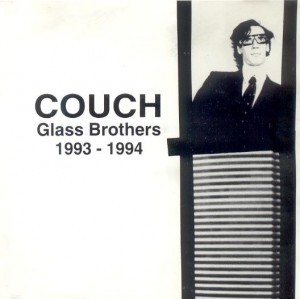
Always dressed in black suits like clowns in reverse, Couch were a (serious) noise band from Michigan.
Glass Brother – which compiles some tracks from previous singles and EP with the addiction of some new songs – gathers fifteen noisy and insane genre-blender cavalcades that seem on the verge of falling into pointless lo-fi wankery…
…and instead often find the way to titillate the nerves with uneasiness, laughters, harassments or bizarre spastic movements, gladly damaging your synapses forever.
Back in mid-90’s the album went completely unnoticed and it’s still pretty obscure: find it HERE, that is Couch’ crooner Marlon Magas (later in the phenomenal Lake of Dracula with WEASEL WALTER of The Flying Luttenbachers and Heather Melowic of SCISSOR GIRLS) own blog, where you can also find some curio about the band. (18th June 2009)
HIS NAME IS ALIVE – HOME IS IN YOUR HEAD (1991)
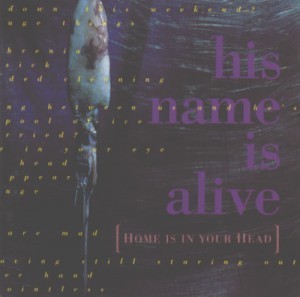
Home Is in Your Head lives of sketched impressions of vivid emotions, never shown off, always suggested.
It could perfectly fit as soundtrack of a ghost story, a tale set in the next world: blurred memories, images of life already lived and now remembered with serene nostalgia, attempts to get through to embrace the nature of this world once again.
(10th June 2009)
RATTLEMOUTH – WALKING LIKE A FULL MOON DOG (1996)
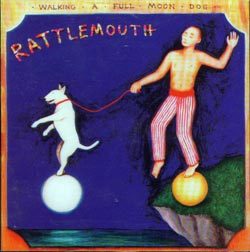
Born as a radical improviser in IDIO(T) SAVANT, then grown up through ORTHOTONICS’ R.I.O.-punk, Danny Finney finally found himself doing some didactic hard-funk fusion, maybe to let us hear how skilled he is with the sax.
(9th June 2009)
THE MOLDY PEACHES – THE MOLDY PEACHES (2001)

Take DANIEL JOHNSTON’s joyful and childish soul, hack it with some noisy and vulgar attitude à la ROYAL TRUX, then double it: there you are with The Moldy Peaches.
Their first album is a captivating (very) lo-fi pop collection, even if nearly a half of the 19 songs are fully avoidable (when not crap): this way the album almost gets lost in an overload of naught and it’s a pity, ‘cause when KIMYA and ADAM are inspired their music is truly sweet and genuine.
But let’s say it, maybe this is the stuff good records are made of: freedom and bluntness. (8th June 2009)
MARS – MARS EP (1980)
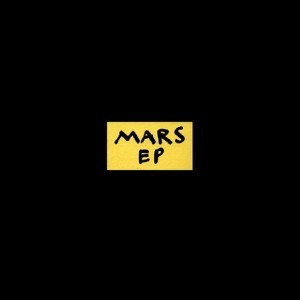
To me, Mars were the most radical act of the whole no-wave scene.
Two years only after their appearance on the seminal No New York compilation, Mark Cunningham and co. have made a huge step toward incommunicability recording these harrowing symphonies, wailing in torment: music is cast aside leaving room to mutant soundscapes made by primeval beings, stream of sounds made noises with no tonal centre, no metrical or formal structures and in an everlasting state of flux, which obeys only the instinctive gesture and pursue only the life-consuming and soul-draining process of everyone involved (musicians and spectators).
“The Immediate Stages of the Erotic” could be some of the most intense music ever recorded even if, due to it’s disturbing and frightening nature, it’s not meant to be listened by humans.
There’s no way you can avoid to hate Mars music, but you’ll come back to it again and again. (7th November 2006)
DAVID THOMAS & FOREIGNERS – BAY CITY (2000)
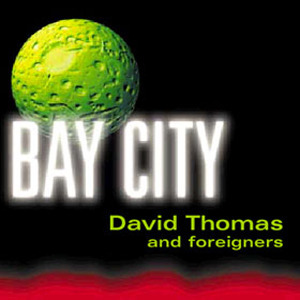
Best Thomas effort since 1986’s Monster Walks the Winter Lake: flowing yet fractured, sparse yet multilayered, thick yet abstract, quietly eventful and unavoidably dark, the music serves Bay City vision (based on Raymond Chandler’s dark novels featuring detective Phillip Marlowe) plundering from different traditions to contradict, mix and then reinvent them, without any apparent surface corruption but an everlasting feeling of alienation.
Maybe the critical point is the band (ironically called The Foreigners, being all danish musicians) broad range and estranging use of instruments, always a perfect underline to Thomas’ continuous flow of moods and emotions.
Brilliant. (7th November 2006)
STEREOLAB – TRANSIENT RANDOM-NOISE BURSTS WITH ANNOUNCEMENTS (1993)
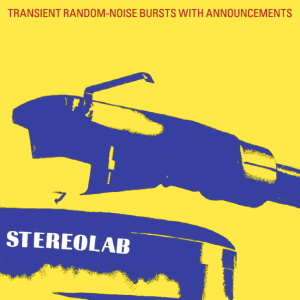
Sometimes it’s just a question of sphere, range, context.
You can even consider these Transient Random Bursts noisy and experimental. In fact they are, in a pop field. Since this is pop, it’s also experimental, it’s noise and it’s good, somewhere even very good. If we’re talking about pop, of course.
Sometimes the music goes beyond pop, steering into more psychedelic and hypnotic territories: it’s the case of “Crest” and especially “Jenny Ondioline”, the best moment (18 minutes is a long moment) of the album: I’m just sorry it has two pauses that somehow break the longing for a climax. (6th November 2006)
GLENN BRANCA – THE ASCENSION (1981)
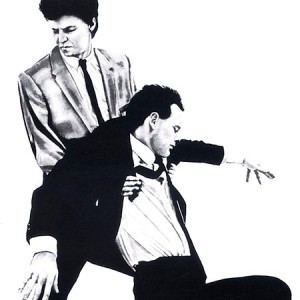
Guitar-driven rock minimalism de facto begins here.
An album in which music constantly falls and rebounds and falls again and bounces back until it finds a tense void where it normalizes and recharges to face and finally begin “The Ascension”, indeed.
The process is impressing and somewhat unnerving and it constitutes an act of disruptive yet deliberate modernization of rock substance, even if, on pure musical pleasure side, in the end it could result a bit tiresome.
A phenomenal record for what it represents, anyway. (6th November 2006)
THIS MORTAL COIL – IT’LL END IN TEARS (1984)
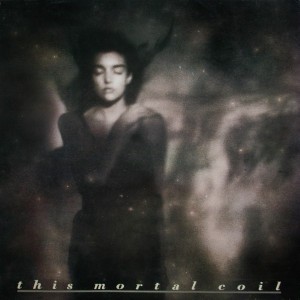
It’ll End in Tears è il debutto dei This Mortal Coil, progetto del fondatore della 4AD Ivo Watts-Russell in collaborazione con vari artisti associati alla label, composto di eteree cover di pezzi folk anni ‘60 e glam anni ’70 e qualche originale.
Disco leggendario ai miei tempi per una determinata frangia di ascoltatori (quelli che di lì a poco si sarebbero buttati sull’EBM…), a me ha lasciato sempre un po’ a desiderare: alcuni episodi (“Fyt”, “Barramundi”) li trovo resi con una bruttezza tale che ti vien voglia di rigare il vinile così che skippino in automatico, e in generale l’incedere del disco risulta troppo fiacco e alla lunga logorante.
D’altra parte c’è una versione di “Not Me” di Colin Newman che è diventata un classico del Batcave, così come un’interpretazione di “Song to the Siren” per la quale Elizabeth Fraser non fa rimpiangere Tim Buckley in intensità.
Soprattutto, questa versione di “Another Day” è un’assoluta gemma. Toccante. It’ll End in Tears. (5th November 2006)
TV ON THE RADIO – RETURN TO COOKIE MOUNTAIN (2006)
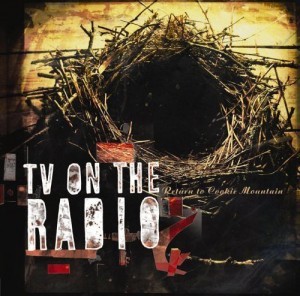
[EN]
Return to Cookie Mountain, New Yorkers TV On The Radio second long work, is indeed a good album but nothing earth-shattering nor revolutionary as many proclaim: what seems to be an attempt to split the difference between indie rock and hip-hop is only half-done, buried in sometimes wild samplings and an over-lush production that aims to cover album’s various flaws, including a generally bland songwriting that slowly builds up some not-so-latent ground tedium.
What amaze most are the misty and dissonant vocal harmonies (featuring DAVID BOWIE and Kazu of BLONDE REDHEAD, among others) that tend to carry the listener to strange parallel dimensions, but alas the overproduction softens and nullifies the impact.
But where technique leaves room for ideas, here is “A Method”, magical.
[IT]
Secondo lavoro dei newyorchesi TV on The Radio, Return to Cookie Mountain, è un buon disco ma niente di trascendentale ne di così rivoluzionario come si sente dire in giro: quello che sembra un tentativo di compromesso tra indie rock e hip-hop riesce solo a metà, sotterrato da una produzione troppo lussureggiante e un sampling a volte selvaggio che cerca di coprire le varie magagne dell’album, tra cui un songwriting generalmente banale che pian piano accumula un tedio di fondo neanche troppo latente.
Colpiscono le armonie nebbiose e dissonanti del cantato (featuring David Bowie e Kazu dei Blonde Redhead, tra gli altri) che tendono a trasportare in dimensioni parallele ma spesso l’overproduzione ahimè ne vanifica l’impatto addolcendole.
Ma dove il mestiere lascia spazio alle idee, ecco “A Method”, magica. (5th November 2006)
TRAGIC MULATTO – JUDO FOR THE BLIND (1984)
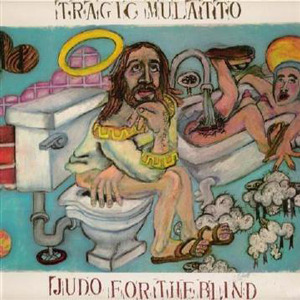
The debut album of one of the most vulgar and pointless bands ever it’s a string of modern bacchanalias of the boldest, laziest and more emphatic.
Songs sustained by tribalistic or martial rhythms only, while some winds (arguably a sax, a trumpet and a clarinet) freely blather along with a bass, casually entwining each other and stealing the scene to the wild and coarse male recitative: it could seem messy – and it is – but all of this is strangely enjoyable.
The aim? Who knows?
And who cares, too, when the results are pieces like the sinister “Tac Squad”, the pataphisical fanfare of “900 Foot Jesus” or the absurd march “200 Responses, 10 Minutes”?
(Honorable mention for the cover drawing, one of the more blasphemous ever) (5th November 2006)
TEST DEPT. – SHOULDER TO SHOULDER (1985)

Quanto Beating the Retreat era dirompente, questo è statico.
Un plauso all’operazione di supporto politico ed economico allo sciopero dei minatori gallesi contro le politiche tatcheriane, ma musicalmente Shoulder to Shoulder ha lo stesso effetto del Serenase senza nemmeno gli effetti collaterali.
Per quasi un’ora ti sembra di stare tra gli alpini, interrotti episodicamente da spoken words in gallese a me incomprensibile, solo qua e là si intravede qualche sprazzo di quelli che considero i veri Test Dept., quelli asciutti e intransigenti dei precedenti lavori.
Tutto ciò sarebbe risultato sicuramente interessante e coinvolgente dal vivo in presa diretta, ma è troppo poco per giustificare l’acquisto di un disco, se non a supporto di una (sacrosanta) lotta.
A saperlo prima…(4th November 2006)
THEY MIGHT BE GIANTS – FLOOD (1990)
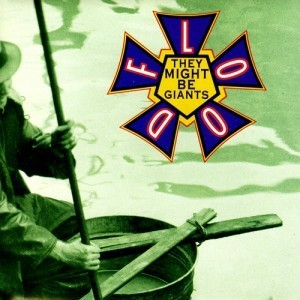
I bought this LP the very day after I saw “Birdhouse in Your Soul” music video, absolutely not knowing what I would have had in my hands: They Might Be Giants’ more inspired album full of pointless novelties and absolute fun!
A journey through every genre of pop and folk blended together in a true flood of sympathetic musical nonsense, with catchy tunes (“Your Racist Friend”, “Minimum Wage”), bizarre numbers (“Whistling in the Dark”, the funniest cover ever of “Istanbul (Not Constantinople)”), witty arrangements (accordions, accordions everywhere!) and funny lyrics tricks (“Dead”, “Particle Man”).
Highly recommended. (4th November 2006)
DIRTY PROJECTORS – BITTE ORCA (2009)
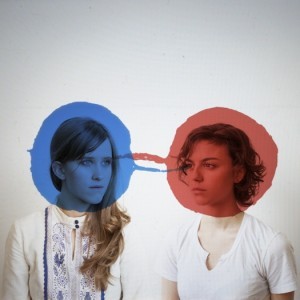
Dirty Projectors are an unique and distinguished great band.
So how hard is to deal with something like Bitte Orca, that is lovely when it stays simple – as in “Two Doves”, or in “Stillness Is the Move” – but so often shows a band that seem posing as oddballs, searching for the freakier line and the strangest tiny sound in the less likely moment?
Yes, melodic and harmonic doodles are Projector’s hallmark, but overuse can lead to a difficult listening experience, strained and in the long run too heavy to bear.
Someone should please keep Dave Longstreth and his bunch of talented fellows away from artful eccentricity, unless chances are they’ll get lost: it’d be frustrating. (18th October 2009)
GRIZZLY BEAR – VECKATIMEST (2009)

Inventive and inspired, melancholic yet soothing, Veckatimest is a masterpiece of creative pop crafting: music refined yet still fresh and genuine, variegate while showing a deep essential cohesion, all thanks to an uncommon melodic insight and a truly magic -and democratic- approach to sounds.
An imaginative and polychrome album in which every color is in the core of beauty and sense and where the listener’s curiosity and quest for feeling always finds its reward, here only for moments, there completely, however maintaining first-rate songwriting in every single song and a clear and peculiar sensibility allover the album.
Last but not least, set aside the (high) quality of their music, this album once again reminds me that Grizzly Bear have the power of make me feel better, ‘cause at every single listen a smile appears on my face: no small thing. (18th October 2009)
PHISH – JUNTA (1989)
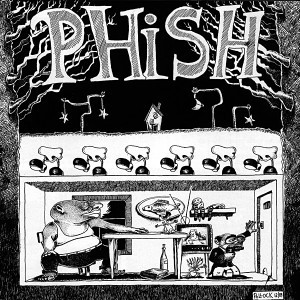
Phish first and (to me) by far best effort to date, already gathering lots of musical ideas in the same prog-jazz long jams that now are their trademark, yet adopting only a few technical mannerisms off the pile these out of date hippies will get used to employ right after this cassette.
Taken in small doses, even 20 years after they are still fun, yet I would say Junta is their only album worth listening as a whole.
But maybe I would be too perfidious. (18th October 2009)
SLEEPY SUN – EMBRACE (2009)
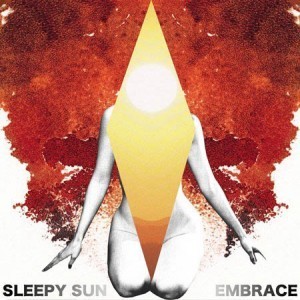
Sleepy Sun is an American psychedelic/stoner rock band from San Francisco Bay Area featuring RACHEL FANNAN of Birds Fled From Me on vocals.
Too derivative to be truly interesting, too simple to be true entertaining, Embrace stands unfinished: has some good point, but any given song seems to promise more than what it really donates.
In the end this however nice debut album it’s a series of pretty good ideas badly (or rather too obviously) exposed.
We’ll see what will come next. (18th October 2009)
BRIAN ENO – HERE COME THE WARM JETS (1974)
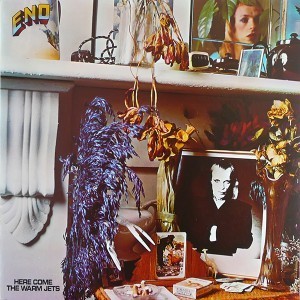
Pioneering the combination of pop mainstream with ambient music, minimalism, aleatoric and world music, and deeply innovating production and sampling techniques and theories, Eno is perhaps to be considered the most important and influential figure over the last 30 years of pop music history, failing a bit only as songwriter.
I mean, “Baby’s on Fire”, “Cindy Tells Me” and “Driving Me Backwards” are definitely a great trio but, when not plain ugly as “Needles in the Camel’s Eye” and the last two songs of the album are, the rest of Here Come the Warm Jets lives too much upon Eno studio tricks, sound mastery and arrangements wisdom.
That said, you can catch a glimpse of future into this vinyl grooves even today. (14th July 2009)
STORM AND STRESS – STORM&STRESS (1997)
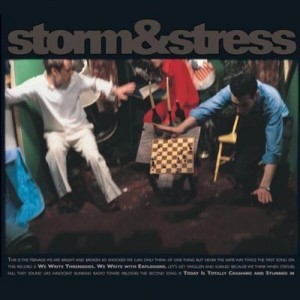
TROUT MASK REPLICA updated to post-rock.
The band (a power trio) had a method: they tried, on purpose, to forget the music they were playing.
What comes up is blurred atomized music, fluxes of modules totally arrhythmic, non-melodic and disharmonic, alternating crisis and catharsis.
Still nobody can fully hide instincts derived from culture so, deeply buried, the structures are still present, like roots of an evergrowing tree with wind-blown leafy branches: static but moving, the tree is alive and in full bloom, and the lymph inside swiftly flows, taking you from the underground to light and back.
At every listen, the course is different.
It could be a tough or thorny listen, but try to be carried by music, to reach infinite places each time.
To me, a peak of 90s popular music. (4th November 2006)
SMOG – RED APPLE FALLS (1997)

Red Apple Falls has been one of my favourite Smog album since the day I bought it.
Over the years I got just a little bored with the tendency to stretch out songs already a bit too slow (“Inspirational” seems endless) and with some to me unfortunate timbre and overall arrangement choice (the sliding guitars, or the horns panning in “Ex-Con”), yet even now I find it a solid album, full of great minimal pieces like “The Morning Paper” or “Finer Days” and downbeat ballads like “Blood Red Bird” or “To Be Of Use”, as a whole somehow emotionally brighter than Smog average, and that’s saying something. (4th November 2006)
THE SMASHING PUMPKINS – MELLON COLLIE AND THE INFINITE SADNESS (1995)
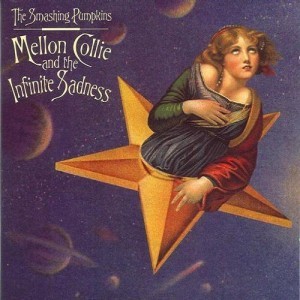
[EN]
Mellon Collie and the Infinite Sadness, or, as it was originally entitled, and I quote: The World’s Biggest Collection of Fillers.
While the solid yet dreamy Siamese Dream, Smashing Pumpkins’ previous album, had got some meaning, here Corgan and co. are caught in delusions of grandeur and the album results in a pretentious and self-satisfied record that struggles in every way to make us believe it is great yet finally is basically formulaic and flavourless, never getting to the point, whatever the point it is.
Among all 28 tracks, the singles “1979” and “Bullet With Butterfly Wing”, the long “Thru the Eyes of Ruby”, “X.Y.U.” and, to a lesser extent, “To Forgive” and “In The Arms of Sleep” are the standouts, the rest is essentially whining pop and more or less showy rock residuals.
Farewell and goodnight.
[IT]
Mellon Collie and the Infinite Sadness, oppure, come da titolo originale: La collezione di Riempitivi più grande del mondo (cit.).
Se il denso e sognante Siamese Dream aveva un senso, qui Corgan e c. si fanno prendere dal delirio di onnipotenza e pubblicano un disco presuntuoso e pieno di sé che si dibatte in ogni modo per farci credere di essere grande e infine però è formulaico, insipido e non arriva mai al dunque.
Su 28 pezzi il meglio si trova nei singoli “1979” e “Bullet With Butterfly Wing”, nelle lunghe “Thru the Eyes of Ruby” e “X.Y.U.” e in misura minore in “To Forgive” e “In The Arms of Sleep”, il resto tirate le somme è pop lagnoso o rock pacchiano.
Farewell and goodnight. (4th November 2006)
STORM AND STRESS – UNDER THUNDER AND FLUORESCENT LIGHTS (2000)
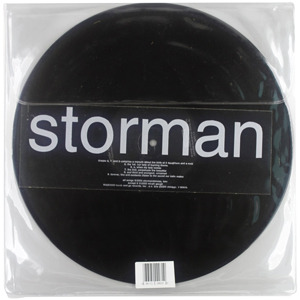
Storm and Stress is one of the most fucked-up, challenging and intellectually exciting acts rock music has ever seen.
Three years after STORM&STRESS, their first album, Ian Williams, Kevin Shea and Eric Emm take up their discussions from where they left off: surgical deconstruction of the song, peeling off its skin with few steady gestures ‘till the crucial act of putting an end to the form, whatever the form was.
Yet, even if still scattered, rotating and edge-cutting, the music flows and somehow it seems slightly more accomplished than in their first work, as if the band respectfully restrains while dismembering, so that textures results a bit easier to follow and, draft dodged through the undergrowth, even the presence of melodic lines can be found, shallowly sung by Williams shapeless voice as in “It Takes a Million Years…” or hummed by a guitar in counterpoint with snare drums frenetic samplings.
Did they slightly withdraw from radicalism? Or did they just have some kind of mercy on the eventual listener?
In short, even if not as groundbreaking as the first LP happened to be, Under Thunder and Fluorescent Lights remains a sublime adventure of the mind. (3rd November 2006)
SHELLAC – AT ACTION PARK (1994)
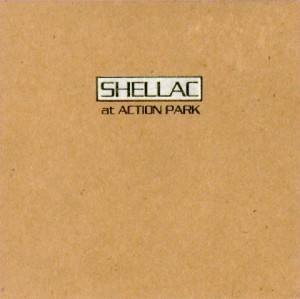
Angular, dazzling, robotic, pulsating.
Shellac research consists in finding out every possible way a perception of threat can be obtained by a power trio, working on musical substances as rhythm, harmony, intensity.
Steve Albini evolves from BIG BLACK and the result is music maybe less violent but far more scaring ‘cause it’s relentless and rational, following an unstoppable mathematical sequence.
Ever peaking tension, without intermissions.
And “Pull the Cup” is one of the biggest song of the whole 90s. (1st November 2006)
A SILVER MT. ZION – HE HAS LEFT US ALONE BUT SHAFTS OF LIGHT SOMETIMES GRACE THE CORNER OF OUR ROOMS… (2000)
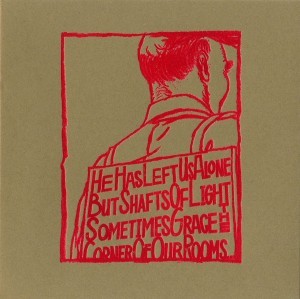
Their first and definitely their best record, too, the only one you need to understand A Silver Mt. Zion chamber music and philosophy behind it: it’s a bit prolix and sometimes it gets lost, and here and there arrangements look somehow unbalanced (mostly the violin seems overexposed to my ears), yet, even flawed, it magically takes to an unique and boundless world apart.
The album title is possibly the most evocative ever imagined, and some songs (“Broken Chords Can Sing a Little” and “Blown-out Joy From Heaven’s Mercied Hole” above all) are truly some of the most passionate renderings of sorrow popular music ever gave.
The cover design too is splendid, one of my absolute favorite ever. (2nd November 2006)
RADIOHEAD – AMNESIAC (2001)
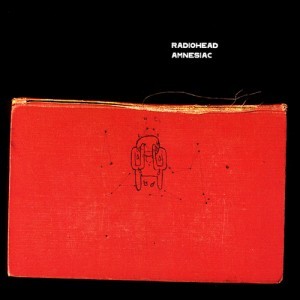
In my experience, with Radiohead it’s often been a question of hit & miss.
OK Computer was an obvious hit on the syntactic side but lacked a bit in spectrum.
On the contrary, while great nevertheless, Amnesiac twin album Kid A seemed to me as a goose chase, too centered on arrangements and timbric research leaving out pure music, turning out in a quite artificial and cold album.
With Amnesiac – born out of the same sessions as Kid A, as stated by Radiohead themselves – it’s like the band gathered all its qualities with more focus and experience without running out in inspiration and vitality, experimenting new solutions without being artful or away from the point, always attending upon both expression and communication, ‘out there’ enough to be always fascinating yet never cryptic.
Music forged in a charming substance made of splendid tunes, dynamic sound and depth of ambience.
A doubtlessly angular work. (30th October 2006)
RED TEMPLE SPIRITS – DANCING TO RESTORE AN ECLIPSED MOON (1988)
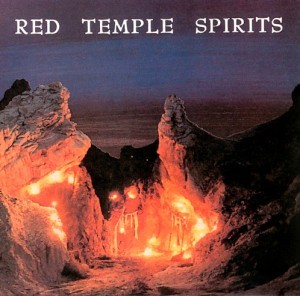
Listening to Los Angeles’ Red Temple Spirits first album is like having to do with PORNOGRAPHY in a PAISLEY dress: tribalistic, gloomy, psychedelic and incredibly dense even in the most ethereal and mystic moments.
William Faircloth voice could seem a bit off-key on such an otherwise luxuriantly dark and lusciously mystic album as this, even if, in the end, can you imagine other voices upon this thick surface? (30th October 2006)
SUPREME DICKS – THE EMOTIONAL PLAGUE (1996)
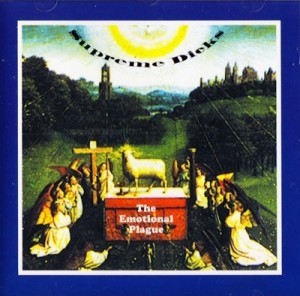
[EN]
Dazed and disharmonious, dissonant and eccentric, dilated and hallucinogenic: free.
Visionaries, the Supreme Dicks are among the forerunners of the new weird america scene (new freak and psychedelic folk, above all) that is experiencing now, 10 years later, his full bloom.
If their previous album was already praiseworthy, as well as the brief but intense EP This Is Not a Dick, The Emotional Plague is the true apex of their production: an exquisite evocative record born out of a lo-fi and free form alchemy of jazz, folk, noise, drone and ambient music that it is likely to be considered among the cornerstones of 90s in inspiration and influence.
Curiously the album shares the cover picture – the Adoration of the Mystic Lamb by Van Eyck – with a Sir John Eliot Gardiner RECORDING of Bach’s Mass in B minor: an unintentional combination but, as the latter does, this too is music which tends to immaterial and it’s spiritual in his own way.
[IT]
Stralunati e disarmonici, dissonanti ed eccentrici, allucinogeni e dilatati: liberi.
Visionari, i Supreme Dicks restano tra i precursori di tutta la scena del nuovo folk (free, freak ma soprattutto psichedelico), scena che sta vivendo adesso, 10 anni più tardi, la piena fioritura.
Pur se anche il precedente album si difende, così come il breve ma intenso “This Is Not a Dick E.P.”, questo in particolare è il vertice della loro produzione: disco splendido, una sorta di alchimia lo-fi e free form tra jazz, folk, noise, drone e ambient music, probabilmente da annoverare tra i cardini di certi anni ‘90 per ispirazione e influenza.
Curiosamente condivide con una Messa in si minore di Johann Sebastian Bach l’immagine di copertina, l’Adorazione dell’Agnello Mistico di Van Eyck: accostamento involontario ma, fatte le dovute proporzioni, come il primo anche questo è un disco tendente all’immateriale: spirituale, a suo modo. (4th September 2006)
SWANS – FILTH (1983)
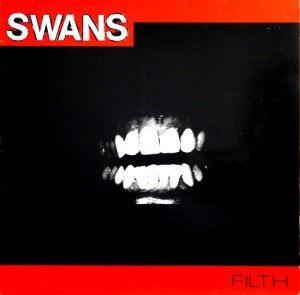
First Swans’ album is a (literally) ground-breaking record of terrific intensity, piercing relentlessly as few did before.
Two invincible drum-sets, two downpitched basses, an ever-distorted guitar, a man barking guttural sounds: Filth is a tank, no, it’s an armored bulldozer approaching, patiently crushing and ripping everything in his way track by track, industrially shaped destruction, artificial and mechanical rage that nonetheless rises from the guts and it’s deeply visceral. It’s the sound of threat and inevitable despair.
Please forgive me if I object to the presence of few other remarkable musical aspects apart the assault, the hymn to distortions and the glorification of hammering rhythms: yet the goal was the menace, not the music, so be it.
Honorable mention for the year this Malleus was conceived: almost 15 years earlier than the world was ready, if ever. (4th October 2006)
WON JAMES WON – THEORIST ATTACK (2006)

Second album by Russian collective Won James Won, Theorist Attack is a post-modern cavalcade of free musical epileptic associations through genres that looks as some kind of game a la “NAME THAT TUNE”: not exactly bad, I’d say absolutely unfocused and unnatural, a fictional random collage of everything came off the top of their heads, with no structure and no small quantity of conceit.
The listening is basically meaningless yet pretty amusing and, you know what? taken each piece out of the puzzle alone, well, it sounds pretty great…(11th November 2009)
NOTE. – MY CITY OF GHOSTS, STARS AND HOURS (2009)
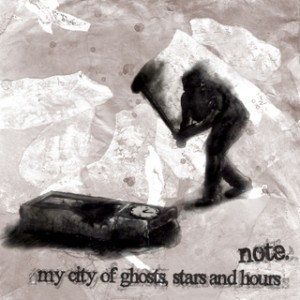
Atmospheric guitar-driven ballads, citing countless sources that range from Mogway to fusion, from country&western to Pink Floyd, from krautrock to Coldplay, all with amusing riffs sprinkled hither and yon.
Not bad at all, yet a bit light-weighted and somewhere prolix. Absolutely recommended if you’re a post-math-whatever freak.
(Find it HERE, made available by the band itself.) (9th November 2009)
LOFTY PILLARS – AMSTERDAM
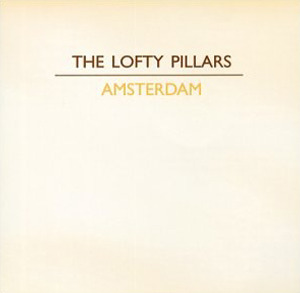
Lofty Pillars are a chicagoan chamber-slowcore band, lead by MICHAEL KRASSNER of praiseworthy BOXHEAD ENSEMBLE collective and featuring respected avant-garde jazz cellist and multi-instrumentalist FRED LONBERG-HOLM, whose musical adventures span from JOE MCPHEE, PETER BRÖTZMANN and KEN VANDERMARK to GOD-IS-MY-CO-PILOT, SMOG, U.S. MAPLE, WILCO and CALIFONE collaborations, just to name a few.
2001’s Amsterdam LP is hailed by critics as one of their major works, yet here my ears sadly found mainly dull and valueless background lounge music, slowed down wails with narrow melodies that follows the poor extension of Krassner voice standing upon theatrical yet ordinary and cold-blooded arrangements.
Very few sparkles of inspiration and creativity or true feeling are noticed, just the same old americana cliches in disguise, revived once again for the unadventurous yet snobby listener delights: pure conservatism made sound. (5th November 2009)
EVANGELISTA – PRINCE OF TRUTH (2009)
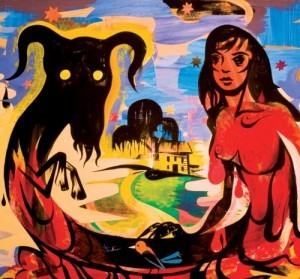
About two years after the astonishingly profound Hello, Voyager, Carla seems to have calm down her own fears, identifying and accepting them: the result is darker and denser than ever yet torment and pain seem gone, leaving space to some kind of sense of defeat, like an anxious state only recurring in dreams.
Rendered in music, the whole thing seem very personal and intimate but tends to keep the listener out: I pass by and remain impressed, but not touched. (3rd November 2009)
OLD TIME RELIJUN – UTERUS AND FIRE (1999)
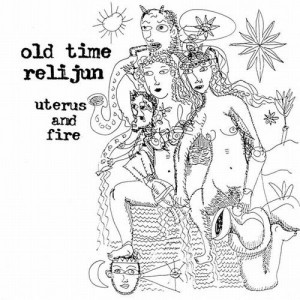
Rude, bare music. Blues to the bone. It punches you from beginning to end. For no reason. (5th January 2007)
MOGWAI – MR. BEAST (2006
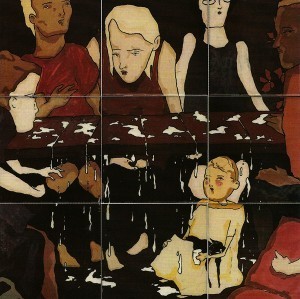
[EN]
Arrived at their fifth official album, Mogwai are hailed by critics as true champions of post-rock.
The post-rock, precisely. Explosions. Pauses as an illusion of tranquility. Violence rarefied, then impetuous, an ever recurring motif.
All very intriguing, indeed, but also everything seems already heard and a little ‘self-congratulatory, too.
Mogwai are much better than the band of Mr. Beast.
[IT]
Giunti al quinto lavoro sulla lunga distanza, i Mogwai sono ormai considerati dei veri e propri campioni del post-rock
Il post-rock, appunto. Esplosioni. Pause come illusione di tranquillità. Violenza rarefatta, quindi impetuosa, sempre tale.
Tutto molto intrigante, tutto però già sentito e ormai un po’ autocompiacente.
I Mogwai sono molto meglio di Mr. Beast. (3rd November 2006)
PUSSY GALORE – SUGARSHIT SHARP (1988)
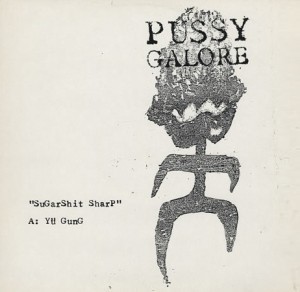
[EN]
Rock’n’roll and blues in punk sauce, bassless noisy and jagged cacophonies sanded at random, with funny rude riffs on mouthy lyrics.
In other words, here come the barbarians. But what a treat!
Friends and roommates of EINSTÜRZENDE NEUBAUTEN, here covered with “Yü-Gung” and to whom this album is dedicated, Pussy Galore are Neil Michael Hagerty and Jon Spencer’s first band: we’re talking about the men who lately will form the less boisterous ROYAL TRUX and the loosener and more disciplined BLUES EXPLOSION, which is saying something.
[IT]
Rockenrolleblues in salsa punk, cacofonie rumoriste scartavetrate a casaccio, riff splendidi e rozzi su testi irriverenti.
Questi sono dei barbari insomma. Ma che grandi!
Amici e coinquilini dei qui coverizzati Einstürzende Neubauten (ai quali tra l’altro il disco è dedicato), i Pussy Galore sono il primo gruppo di Neil Michael Hagerty -quello dei più rilassati Royal Trux- e di Jon Spencer -quello dei più composti Blues Explosion-, il che è tutto dire. (30th October 2006)
PRINCE AND THE REVOLUTION – PURPLE RAIN (1984)
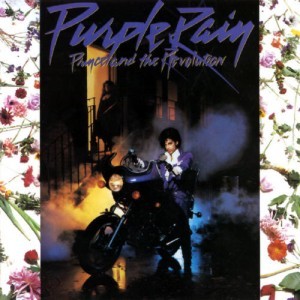
[EN]
Two gorgeous and contradictory masterpieces – the minimalist sinuosity of “When Doves Cry” and the dry, violent lust of “Darling Nikki” – plus what can be considered the definitive ballad – “Purple Rain”, maybe just a little too long – stand out in this mock soundtrack to an equally fake movie, an album on an even keel between funk-rock glitter that never quite left the 70s and more or less inspired pop, partly weighed down by some electronic arrangements typical of the period (which alas Prince abused) and a certain bombast here and there he just can’t hold back.
[IT]
Due splendidi e contraddittori capolavori -la minimalista sinuosità di “When Doves Cry” e l’asciutta, violenta lascivia di “Darling Nikki”- più quella che può considerarsi la ballad definitiva -“Purple Rain”, forse un tantino troppo lunga-, spiccano in questa finta colonna sonora di un altrettanto finto film, un album conteso tra funk-rock glitterato e mai del tutto uscito dagli anni ‘70 e pop più o meno ispirato, parzialmente appesantito da alcuni arrangiamenti elettronici tipici del periodo (di cui ahimè Prince abusava) e da una certa magniloquenza che qua e là proprio non riesce a trattenersi. (30th October 2006)
PRIMUS – SAILING THE SEAS OF CHEESE (1991)
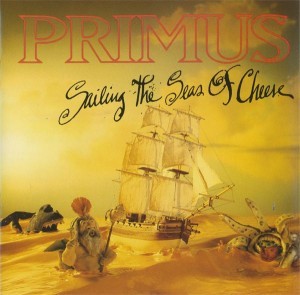
[EN]
Sailing the Seas of Cheese, Primus’ second studio effort featuring eleven cheeky black humor cartoon tunes with lots of killer bass-lines, plus “Tommy the Cat” (a collaboration with TOM WAITS) and “Jerry Was a Race Car Driver” (Primus’ first tiny commercial success), it’s an excellent and fun album indeed, yet I find it more out-of-focus than Frizzle Fry, their wonderful first work, as if the trio went a bit too far putting into the cauldron both their masterly technique and their longing to surprise but not kneading the dough enough and exceeding with salt: a pity, it could have been a new masterpiece.
[IT]
Pur essendo un disco eccellente (eh, avercene…), trovo che Sailing the Seas of Cheese – secondo album da studio dei Primus, forte di undici pezzi che sembrano arrivare direttamente dalla colonna sonora di un cartone animato dall’umorismo nero, più “Tommy the Cat” (collaborazione con Tom Waits) e “Jerry Was a Race Car Driver” (primo piccolo successo commerciale del trio) – sbrachi un po’ e sia soprattutto un po’ “fuori fuoco” rispetto ad altri lavori della band (il meraviglioso Frizzle Fry su tutti).
E’ come se i tre abbiano messo nel calderone la loro tecnica sopraffina e la loro voglia di sorprendere ma senza mescolare ed esagerando col sale: peccato, avrebbe potuto essere un secondo capolavoro. (30th October 2006)
PEARL JAM – TEN (1991)
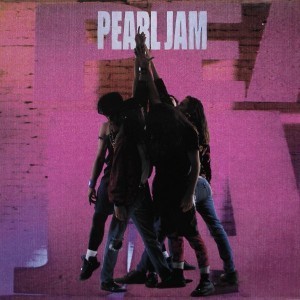
Conservative virile music for elder rockers delight.
Iconic band, Pearl Jam were probably the most technically gifted yet, in the same breath, the least original band that came out of so called “grunge” top roster (anyway, is Pearl Jam music any “grunge”?).
By comparison with bands they were paired then (to say NIRVANA, MELVINS, MUDHONEY or even SOUNDGARDEN), Pearl Jam lacked of personality and vision: basically they slavishly espoused hard rock without adding anything peculiarity to the genre, on the contrary removing some of its rawness and rounding off any angle to have some histrionic and vigorous rock, formally perfect and charging up but essentially speculative and lacking of substance.
That’s to say they never truly got me on fire.
Anyway, Ten is my Pearl Jam favorite album, and a good one indeed: “Ocean” is a splendid ballad, “Once” and “Porch” are propulsive like trains, “Even Flow” and “Alive” are two perfect song, absolutely epic, even if not sounding completely true. (29th October 2006)
COLIN NEWMAN – A-Z (1980)
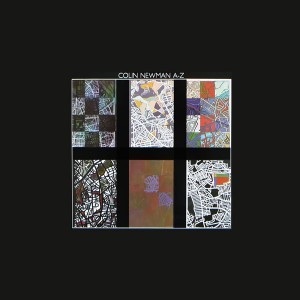
“Alone” alone it’s worth the price, but the whole album is an intelligent post-punk gem sparkling through the dark, with synth driven gloom ballads (“Order for Order”, “Troisième”), tense dance punk anthems (“Life on Deck”), electronic panoramas constantly developing (“Image”), ranting and raving intervals of hallucinations (“S-S-S-Star Eyes”) and some obvious WIREsque images (“inventory”, “But No”).
The lushy synthetic production, the angular and bold bass guitar and the overall harmonic delirious tension are pillars of Gothic Rock that would came right after. (28th October 2006)
NEUTRAL MILK HOTEL – IN THE AEROPLANE OVER THE SEA (1998)
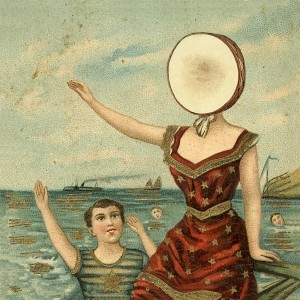
[EN]
The typical product of ELEPHANT SIX collective: simple and direct but also quite varied, living of alternatively light and obscure phases, with arrangements that range from acoustic-bucolic up to include a brass band still ever remaining fully rock, that kind of songwriting that owes much to DYLAN, COHEN, 60s easy listening and, why not, PAVEMENT at the same time but that it still keeps its originality, almost captivating but never really thrilling, indeed, and here and there getting a bit boring, too.
To sum up: maybe not as essential as many call it, still In the Aeroplane Over the Sea is a precious album.
[IT]
Tipico prodotto del collettivo Elephant Six: semplice e diretto ma pure piuttosto vario, che vive di momenti chiari e altre più oscuri, orchestrazioni che spaziano dall’acustico-bucolico fino a comprendere una banda di ottoni ma che restano comunque in ambito rock, un songwriting che deve molto a Dylan, Cohen, il pop anni ‘60 e, perché no, Pavement allo stesso tempo ma che resta comunque originale, coinvolgendo senza però davvero appassionare, anzi, qua e là annoiando pure un po’.
In conclusione: magari non così fondamentale come molti affermano, ma comunque prezioso. (27th October 2006)
THE MONOCHROME SET – STRANGE BOUTIQUE (1980)
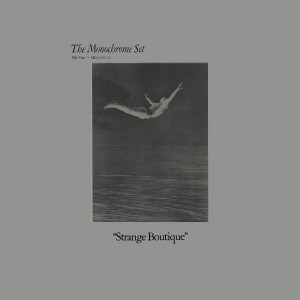
Guitar driven new wave of the funniest.
I didn’t like it, back in the days: it was too easy and it lacked of “pathos” to my ears, or almost was not what I was looking for.
Now that I have less adolescent false claims, I enjoy it very much: lots of rumbling rhythms and edgy guitars, but all in all it’s simple and serene even when it gets odd, and it happens often. (26th October 2006)
MINOR THREAT – MINOR THREAT (1984)
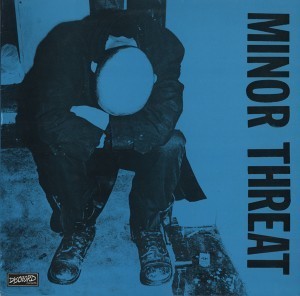
Minor Threat perhaps defined archetypal Hardcore Punk: speed, anger, brevity and courage, truth, intransigence.
I’m pointedly not into HC anymore, but this was playing in loop, years ago. (26th October 2006)
NIRVANA – NEVERMIND (1991)
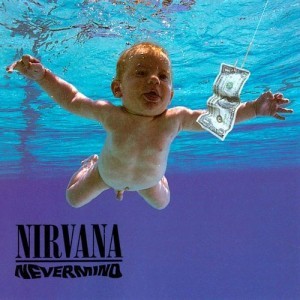
[EN]
Nevermind sounded like no other record before.
Or rather, it sounded like everything had been already made, but violently beaten and then spilled through a filter, as if Nirvana had learned the lesson of HÜSKER DÜ and THE REPLACEMENTS softening the edges and sublimating the communicative dimension.
It was the perfect blend of decadent pop melody, (hard) rock structure and quotes, urgency feelings, punk violence and a neat yet noisier than ordinary sound, all summed up and produced with the utmost care by someone who had fathom its artistic and commercial potential, investing on it.
Above all, what shined through the music was that Cobain believed it in what he wrote.
The status of myth Nevermind gained over the years is definitely the outcome of music-industry, promoters and journalists’ work (and not least Cobain’s suicide), yet when it came out was explosive, passionate and enthralling and even now it remains a perfectly oiled mechanism built to shows failures and weaknesses of its creator, as a see-through mirror.
Revolution? Maybe not, but surely Nevermind gave a boost to what shortly after has been known as “alternative rock”.
[IT]
Nevermind suonava come nessun altro disco prima.
O meglio, suonava come tutto ciò che c’era già, ma frullato con violenza e spillato attraverso un filtro: come se i Nirvana avessero appreso le lezione degli Hüsker Dü e dei The Replacements ammorbidendone gli spigoli e sublimandone la dimensione comunicativa.
Era la perfetta sintesi di decadente melodia pop, struttura e citazioni (hard) rock, sound curato ma più noise dell’ordinario, sensazioni d’urgenza e violenza punk, tutto frullato e prodotto con la massima cura perchè qualcuno ne aveva inteso il potenziale anche commerciale, investendoci.
Soprattutto, traspariva che forse Cobain ci credesse davvero in quello che scriveva.
Lo status di mito che ha oggi è sicuramente figlio del lavoro di discografici, promoter, giornalisti, così come il suicidio di Cobain ha certamente aiutato, però quando uscì Nevermind era già qualcosa di dirompente, appassionato, trascinante e resta tutt’ora un meccanismo perfettamente oliato costruito per mostrare i difetti e le debolezze dell’uomo suo creatore, che ci si specchiava rendendosi trasparente.
Rivoluzione magari no, ma una bella botta a quello che di lì a poco si sarebbe chiamato “rock alternativo” glie l’ha data. (18th June 2006)
MEW – NO MORE STORIES … LET’S WASH AWAY (2009)
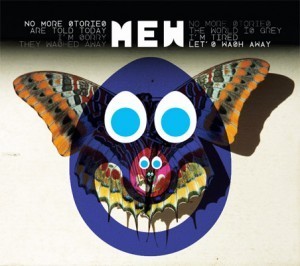
Apart the lovely “Introducing Palace Players”, here’s mostly pretty annoying symphonic and choral pop that somehow ape Animal Collective but gets nowhere near in creativity (and with AC, we’re not always talking this much of a peak, indeed).
Skip with no remorse, unless you’re… young!
Anyway, is there any concept behind the “distorted bass” ultimate fashion? (27th December 2009)
APSE – CLIMB UP (2009)
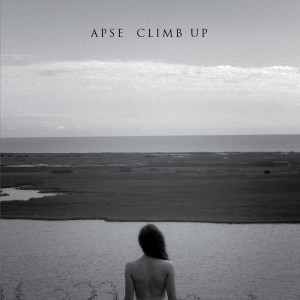
After a promising debut, Apse seem to tend towards a normalized and harmless ambient pop, adding themselves to the fray of those who seem intellectual and eclectic, when in fact tone down any harshness and non linear character of their music.
Here everything seem perfectly planned and definitely well-crafted, yet honestly mediocrity and bore sadly take over. (17th December 2009)
VOLEBEATS – SOLITUDE (1999)
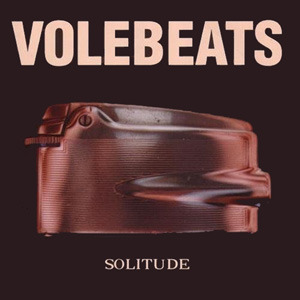
The perfect album for my friend Lubna, music soaked in western poetic and filled with pathos.
To me? I find all the ballads (but the intense “Lonely Way to Go”) pretty flat, most of all because of an ugly flat singing and not a note out of the cliche of a genre that (let’s say it) is far from my own background musical culture probably more than, to say, Raï or Rembetika music can be, leaving me baffled on what should be my priorities in music. Yet the splendid desert atmospheres living in the true core of the album, the instrumental episodes, make me want to take my nag and head towards this promised utopian West once more.
CORPSES AS BEDMATES – VENUS HANDCUFFS (1986)
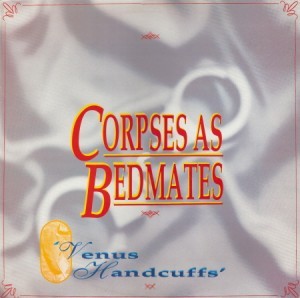
Corpses as Bedmates were vocalist and guitarist SUSANNE LEWIS, bassist BOB DRAKE – both members of 5UU’S and avant-prog champions THINKING PLAGUE – and multi-instrumentalist Karen Sheridan, who left the band after two obscure cassettes of skinny mentally-ill lullabies.
In Venus Handcuffs, first and last official effort of the remaining duo, the music steered towards some kind of doom-wave gone bad: the music of Mike Gira under narcotics sung by a drunken adolescent. Ten heavy, percussive, noisy, dissonant and reverberated nightmares, totally unnerving and alienating for a splendid little album gone completely unnoticed, and it’s a pity. (4th December 2009)
HOODOO GURUS – STONEAGE ROMEOS (1984)
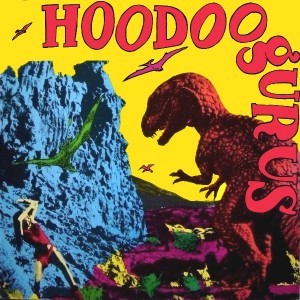
Apparently this kind of easy-listening-fleshtones-alike music served in a lame 80’s production would not be my cup of tea but, since my youth, every time I listen to Stoneage Romeos I find myself singing and shaking my head rhythmically: that is what maybe this album was made for, anyway.
Power pop that steals either from garage, psychedelia and rockabilly to strike, reaching its goal being utterly funny, with an high number of hooks (I mean, go listen “(Let’s All) Turn On”, “I Want You Back” or “Dig It Up” and give me a feedback), a great flow and basically not a single leak. (24th October 2007)
MELT-BANANA – TEENY SHINY (2000)
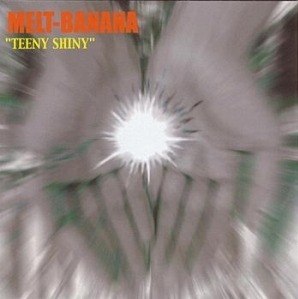
Probably not the funnier, yet Teeny Shiny is arguably the most musical accomplished Melt Bananas’ album.
The core remains high speed noise-punk-delirium, but not everything is left to the unintelligible chaos they got us used to: the songs are longer (yes, 1:46 is longer than their average!), clearer and somehow slower and, searching through the violence, some primitive structure is evident. In addiction, Yasuko seem yelling in a proper language instead of the usual cartoon squawks.
The real question seems: is this a pop album, in their own minds? (26th October 2006)
MAGMA – MEKANÏK DESTRUKTÏW KOMMANDÖH (1973)
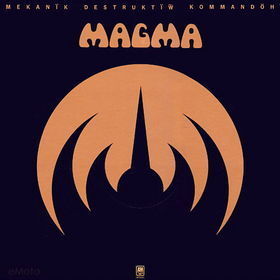
Relentless operatic trance circus music.
Sounds great but actually it isn’t, in fact it’s pompous and naive enough to become somehow ridiculous: the music of a national-socialist parade if ever nazis were joking.
Relistening to it after many years, I’ve found it even worse than I remembered.
I’m still wondering how it could have become a landmark album for some. (26th October 2006)
LIVING IN TEXAS – LIVING IN TEXAS (1984)
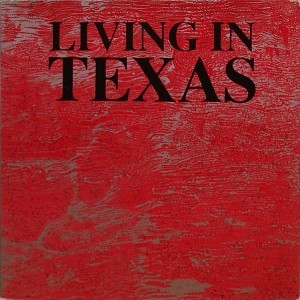
Despite the band’s name, this is some vibrant gothic post-punk from England.
We come to grips with some dark atmospheric ballads (“The Sea” and “Heat” are two truly great songs, and “This Blood Religion” is something even more beautiful, with its voices interweaving), some progressive(ly) post-punk-rock songs (“Ulysses”, “Tumbling Values”), a pair of urgent tracks (“Me (the other side of)” and “Here Come the Boat Traders”, both defined by some nervous, persistent and responsive rhythmic and probably the true core of the album) and even some bland experiment with cut-up techniques and voices (“God Bless America II”, “Mexican Nun”, both not entirely focused).
Nothing too odd or truly menacing, just a good collection of fairly nervous and tense songs, paying tribute to AND ALSO THE TREES, TONES ON TAIL and THEATRE OF HATE (and somehow to VIRGIN PRUNES, too) yet with their peculiar character, different, a bit edgy and often melodically captivating.
A pretty obscure band, Living in Texas would have turned to play some unimaginative straight and raw rock just few years later, yet this debut album, which is by far their best effort but went totally overlooked back in the days, it deserves now some attention almost by the clever dark-wave digger. (26th October 2006)
LEMON KITTENS – WE BUY A HAMMER FOR DADDY (1980)
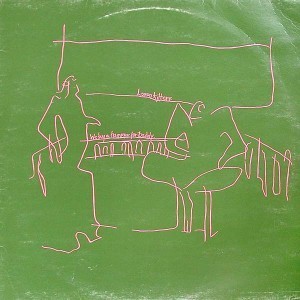
Short unstructured dadaist pieces, covering as much music as they can: from the spastic funk of “P.V.S.”, sung by a pair of alienated beings (you will find them often, ‘round here); through the ghostly chorus of “Coasters”; the out of tune sax lullaby of “The American Cousin”, the computer generated lieder of “Evidence”, sustained by a frenetic drumming; the hallucinated and lyric “(Afraid of Being) Bled by Leeches”; the retarded declamation of “Pain Topics”; the eerie freely traditional tune of “Wrist Job / Once Green and Pleasant Land”, shot through by a soprano and a sax; the pointillistic noise of the “Lycanthrothene”; the wonderful “Motet” with its switched canonic vocalizes; the stop-and-go funky riff “Throat Violence” with Danielle screaming and bellyaching; to end with last crippled dream of “False Alarm (Malicious)”.
A greatly underrated album, genuinely eclectic and enigmatic, full of sketched ideas in a dry and dense free psychedelic atmosphere, finely unnerving.
I wonder why Lemon Kittens went so unnoticed. (25th October 2006)
LIARS – DRUM’S NOT DEAD (2006)
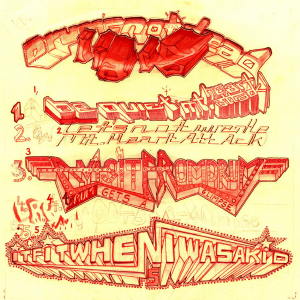
Liars definitely set aside harsh angularity and, with FAUST and RADIOHEAD’s lesson in mind, in this album they craft a monolith of rare intensity and obsession, comprising myriads of infinitesimal beats in an unique multidimensional flow.
Elevating unceasing repetition to art and stopping over, ostensibly motionless, only where tension is inevitable, Drum’s Not Dead is the musical rendition of a multiple hallucination before your own death of painkillers overdose, and the post-modern version of the “rock opera” concept album, a vision in which two blurred allegoric characters (the rationality of Mt. Heart Attack and the freedom of Drum) meet, collide and overlap, as in every human being.
To me, one of the decade masterpieces so far. (25th October 2006)
KLETKA RED – HIJACKING (1996)
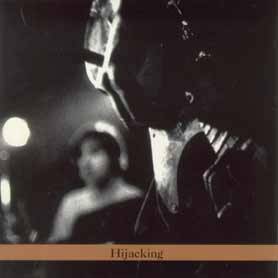
[EN]
When someone like Leonid Soybelman (Ne Zhdali), who with his first solo work, Juliki, had already given a brilliant proof of his artful inclination to whirl east-European tradition with modernity, well, when someone like him meets the creative and philosophical freedom of Andy Moor (The Ex), then the result can be nothing less than a bastard record: crossbred and uncompromising at the same time.
Noisy folk from the depths of the soul, from which it burst out unfinished to find new life even dirtier, more nervous, urgent, hybrid and engaging…
[IT]
Quando uno come Leonid Soybelman (Ne Zhdali), che con Juliki, il primo lavoro solista, aveva già dato splendida prova della sua geniale attitudine a frullare la tradizione est-europea con la modernità, beh, quando uno come lui, incontra la libertà creativa e filosofica di Andy Moor (The Ex), allora il risultato non può che essere un disco bastardo, ovvero meticcio e intransigente a un tempo.
Folk rumoroso dalle profondità dell’anima, dalla quale scaturisce sotto forma grezza per trovare nuova vita ancor più sporco, nervoso, urgente, ibrido, coinvolgente… (25th October 2006)
HULA – MURMUR (1984)
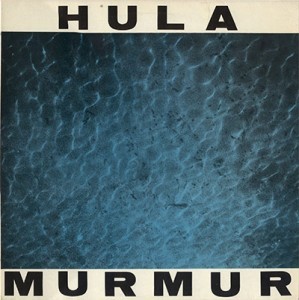
Samplers, noises and paranoid vocals upon insistent upbeat tempo and hammering bass: aware of Cabaret Voltaire, 23 Skidoo and even The Pop Group lessons, Hula music has potential but never really starts and in the end results somehow mediocre, for a lack of real framework (funk alone is not enough to hold up something has the ambition to be a song), non-existent melodic lines, predictable rhythmic envelopes and an overall messy monotony. (25th October 2006)
KILLING JOKE – NIGHT TIME (1985)

The band that once proposed some of the heaviest and more uncompromising music ever, much thanks to proto-industrial walls of sound so toxic to melt your bones down (a seminal lesson later learned by bands such as Ministry and Big Black, with different results), has gradually soften their approach, setting aside the stark violence and with it any fanciful artistic ambition.
With this album the Killing Joke finally made their splash getting lighter and more danceable than ever: “Night Time” and “Eighties” were in fact true floor fillers in any gothic club. And “Love Like Blood” is their greatest pop song ever. (25th October 2006)
DANIEL JOHNSTON – THE EARLY RECORDINGS VOLUME 1 (2003)
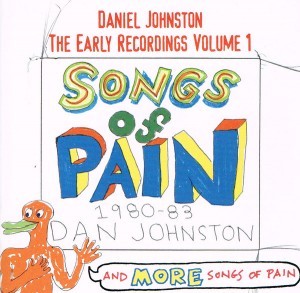
[EN]
Compilation that collects Songs of Pain and More Songs of Pain, two home recordings tapes distributed in around 1982 to a limited circle of Johnston’s friends only.
Home recordings means voice and piano probably recorded live with a tape deck: the audio quality is the lowest, sometimes beyond unlistenable.
But there is a higher musical quality, most of all melodically but not only, which allows (indeed enhances) the listening.
Songs of a child struggling with the discovery of self-consciousness, of the world and the emotions that govern its perception, songs that spring from happiness to tragedy, from fun to passion. Pieces of humanity: never trivial, anyway.
[IT]
Compilation che raccoglie Songs of Pain e More Songs of Pain, due cassette di registrazioni amatoriali, distribuite 20 anni prima solo a una cerchia ristretta di amici di Johnston.
Per registrazioni amatoriali s’intende voce e piano probabilmente registrati in presa diretta con un mangianastri dell’epoca: la qualità audio risulta infima, al limite dell’inascoltabile.
C’è però una qualità musicale superiore, soprattutto melodicamente ma non solo, che permette (anzi esalta) l’ascolto.
Canzoni di un bambino alle prese con la Scoperta di sè, del mondo e delle emozioni che ne regolano la percezione, canzoni che balzano dalla felicità al dramma, dal divertimento alla passione. Pezzi di umanità: mai banali, comunque. (25th October 2006)
KINGS OF CONVENIENCE – QUIET IS THE NEW LOUD (2001)
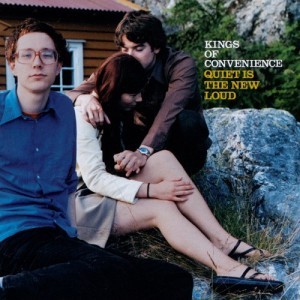
A shiny album, made of unique simplicity and bliss.
An everlasting caress.
(19th March 2006)
